2024: January news – Busy January
It’s been a busy January on the farm as we work to get the new season underway – our tunnel potatoes are now planted in tunnel 1 into the remnants of last year’s hotbeds spread over the bed thanks to a great couple of volunteer mornings.
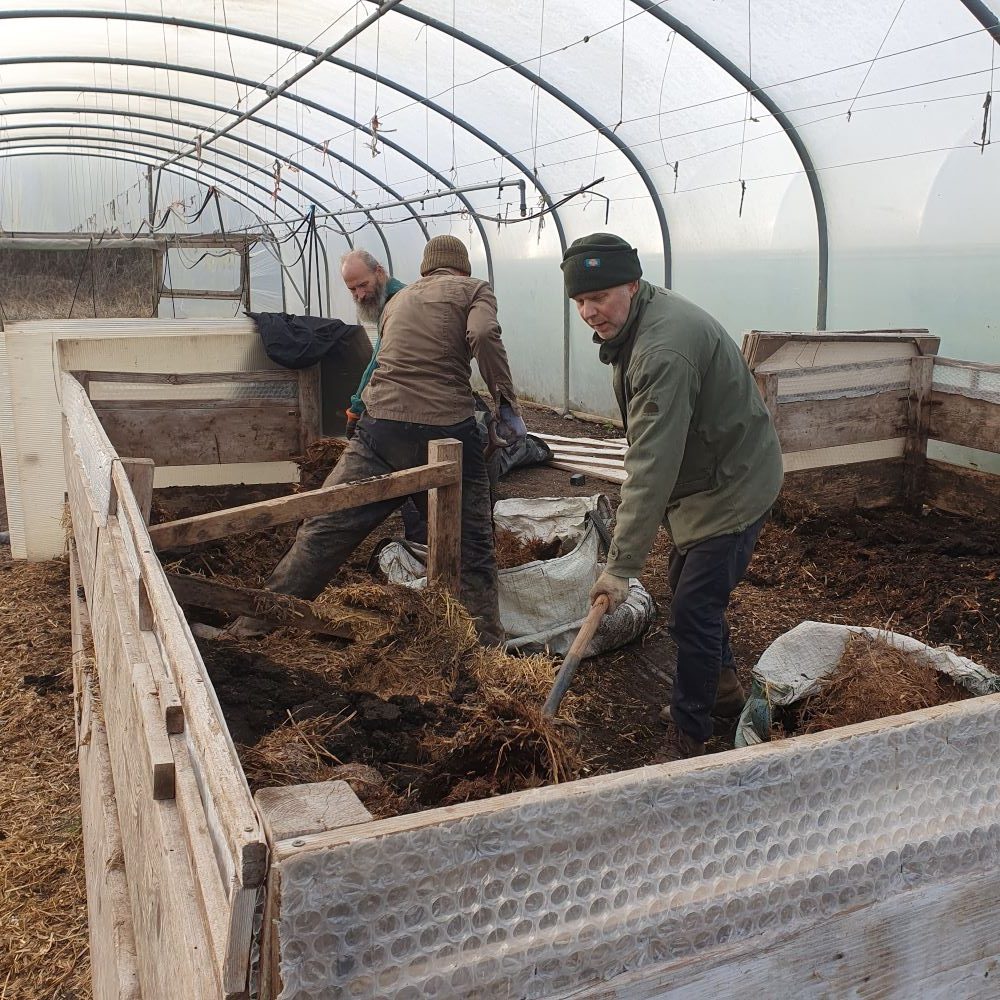
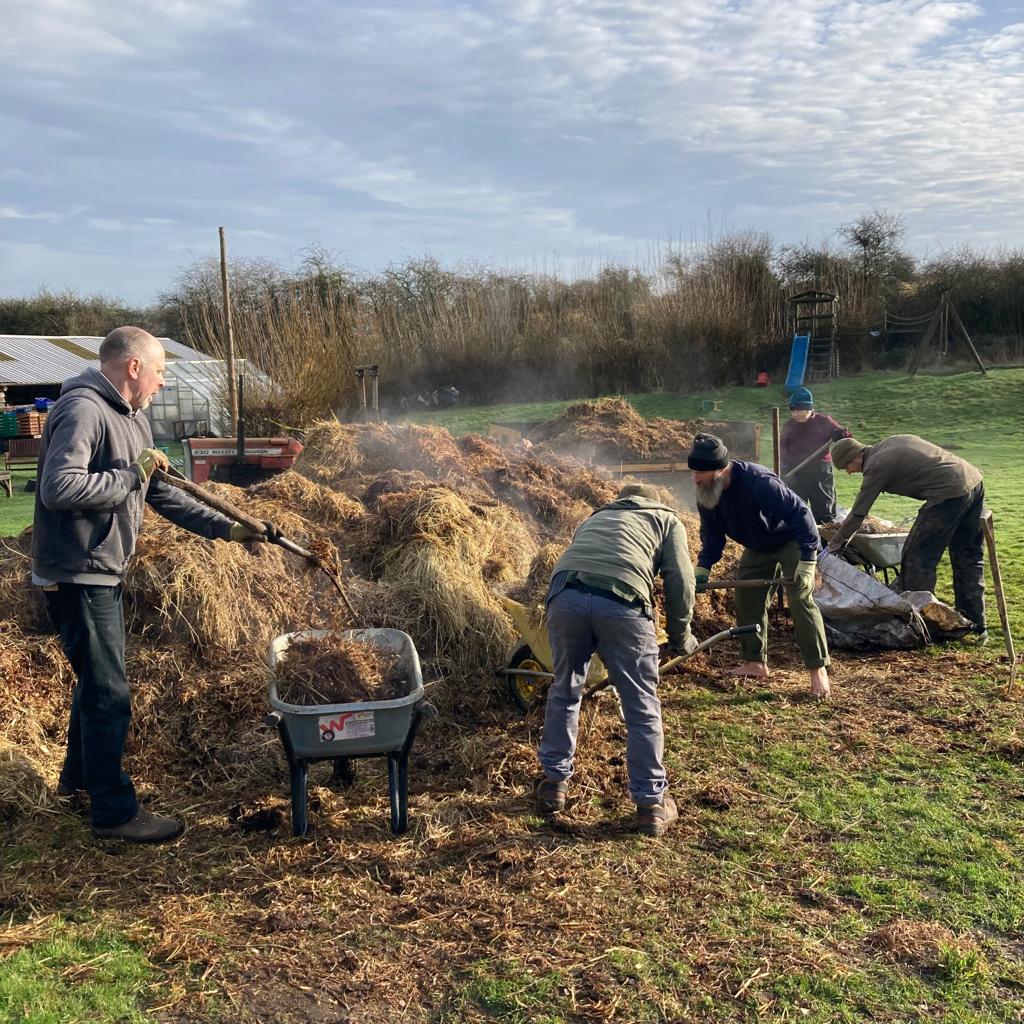
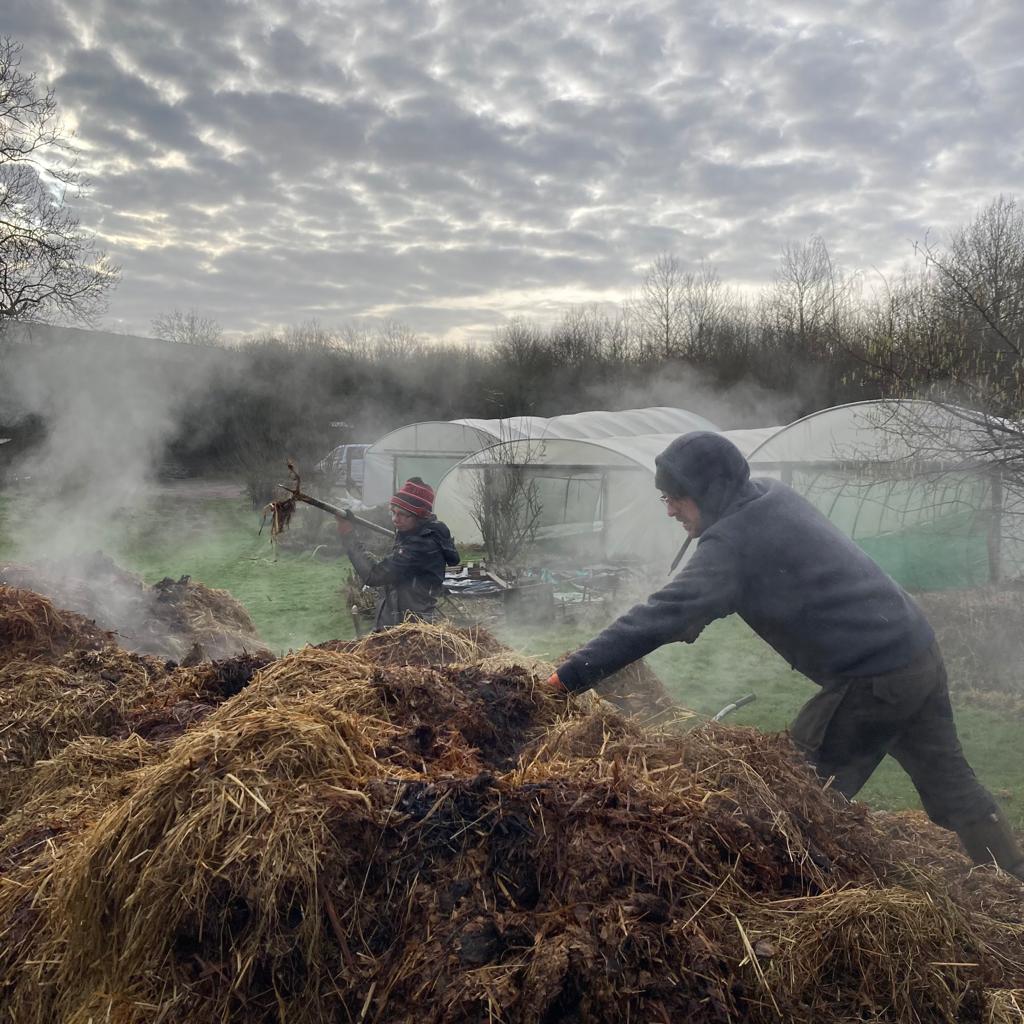
At the same time a new load of muck has arrived from a local farm plus we’ve supplemented it with a load of chicken muck from Skye Orchard Eggs (the egg scheme for anyone who gets eggs from the egg shed) to make our new hotbeds this season so we can generate some heat and sow our first seeds next week.
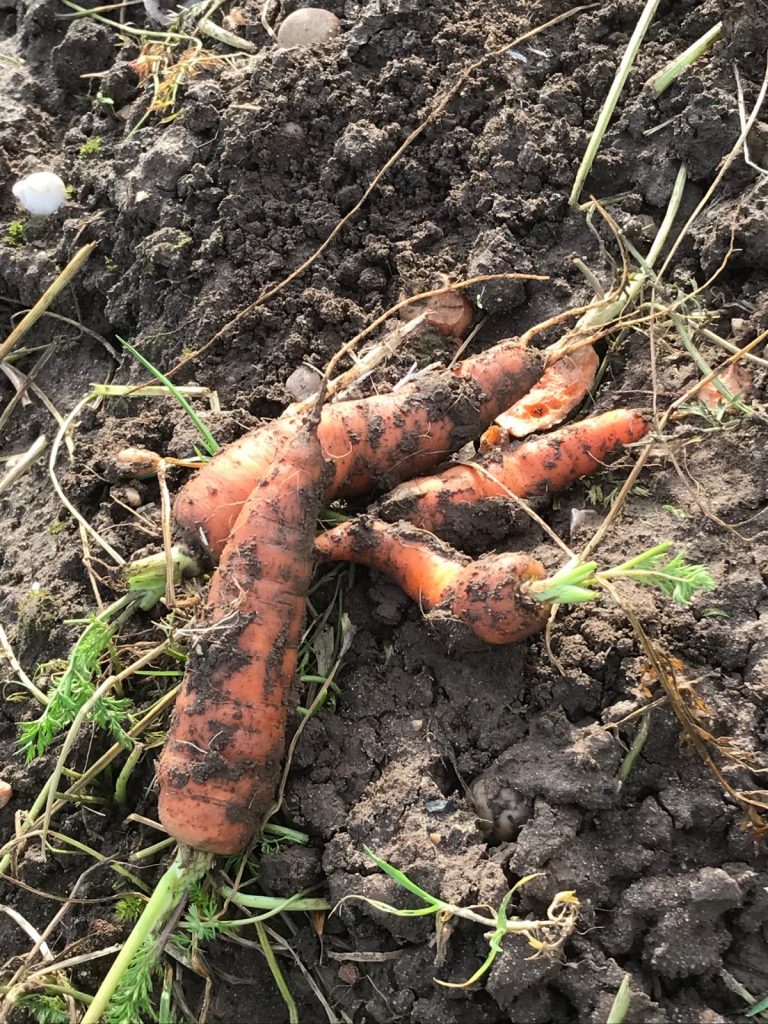
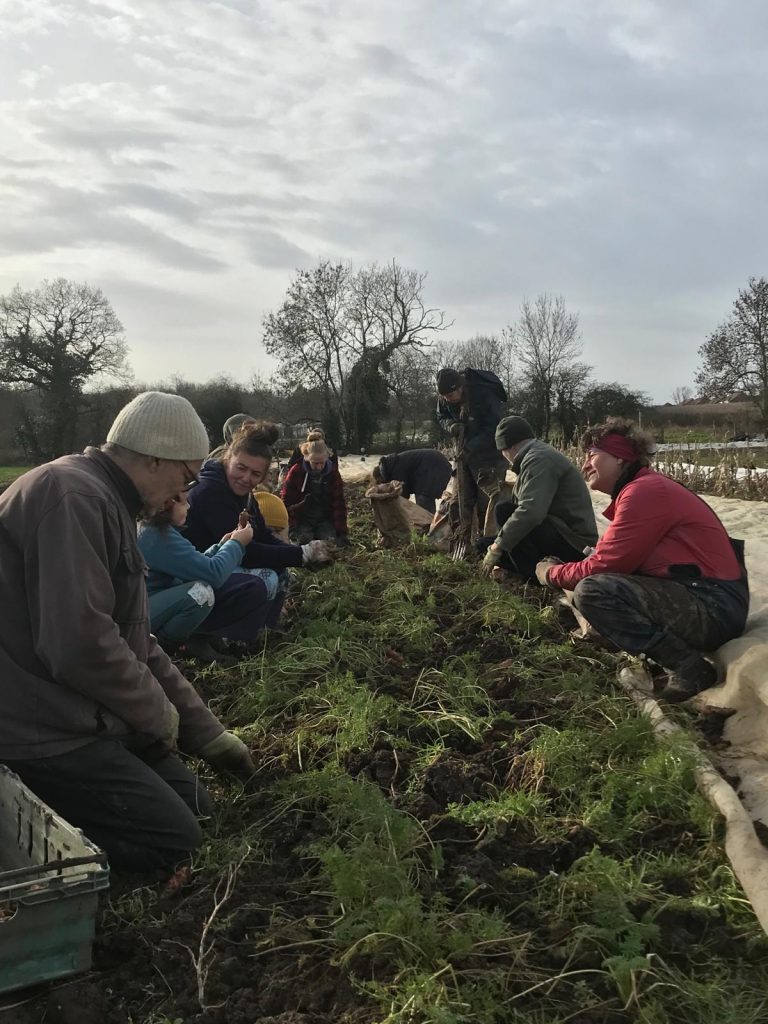
Despite the challenges we’ve harvested lots of lovely veg from the fields – our carrots have been great this year and we’re still trying to add as much diversity as possible to your share with things like black Spanish radish, cabbages and Jerusalem artichokes. It was great to get a share of fresh claytonia (winter salad) thanks to some serious weeding that we did on the last day before we closed for Christmas.
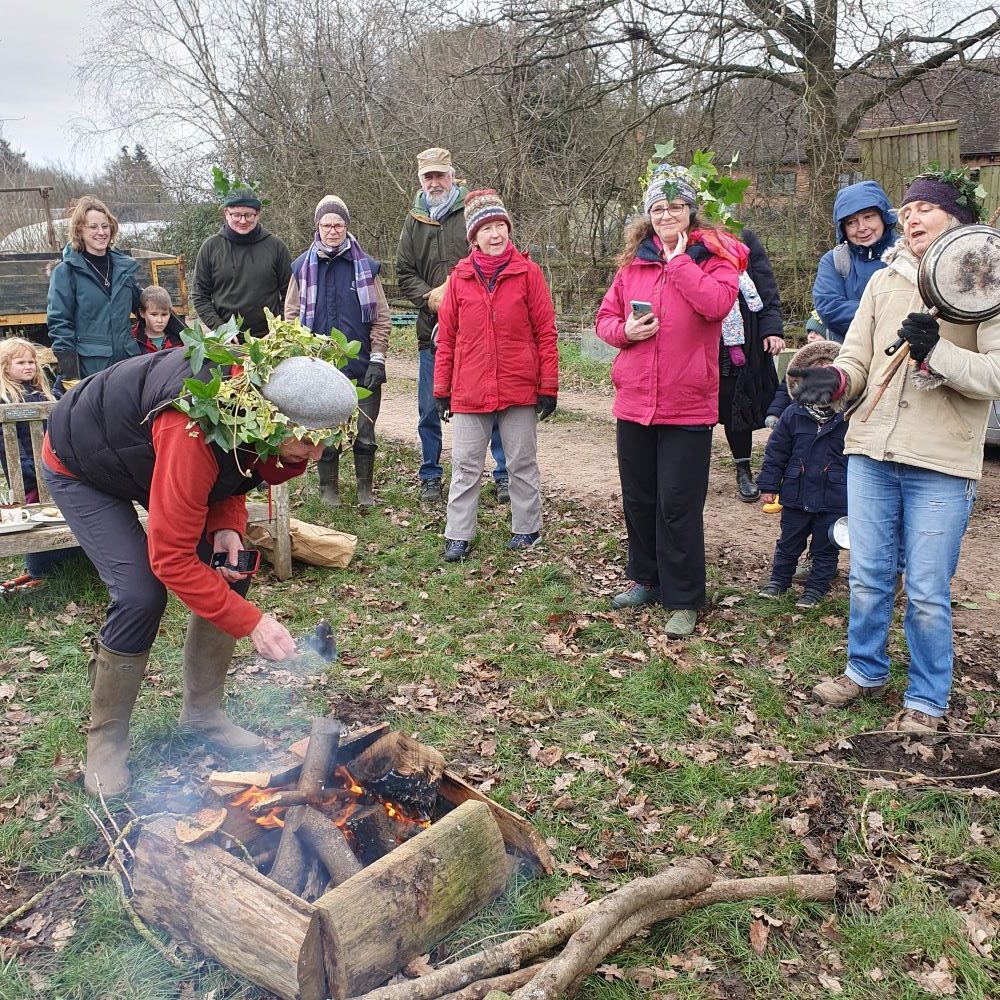
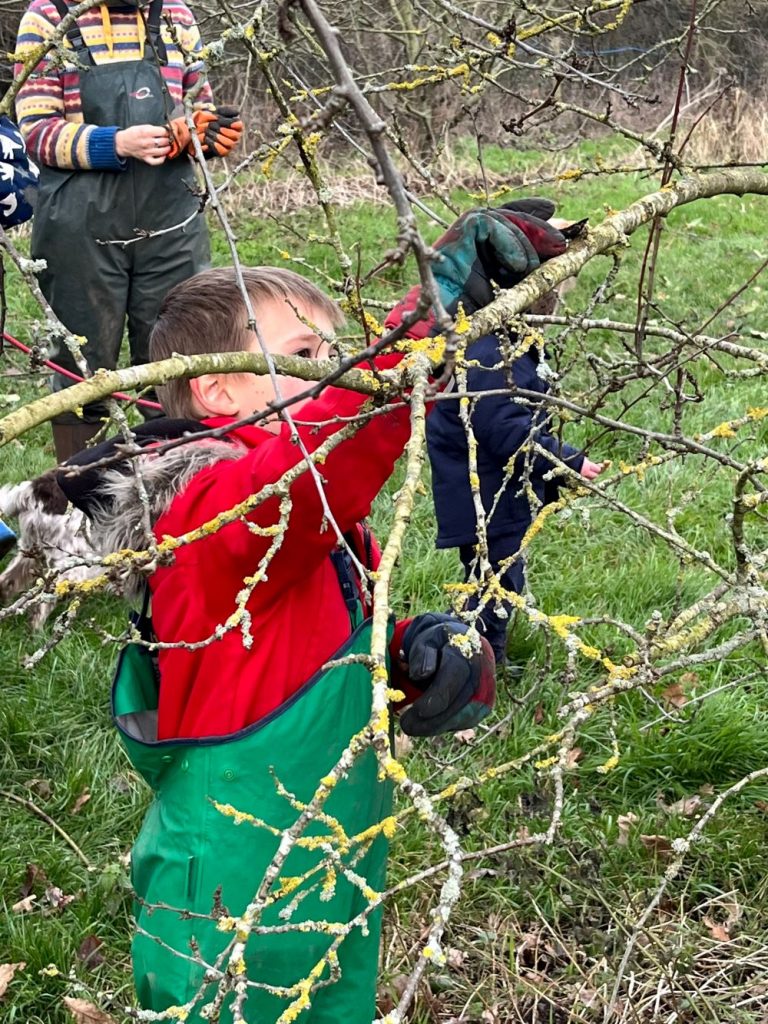

Meanwhile, rest assured the orchard is thoroughly wassailed (!) as we had a great turn out for our social and orchard work morning, pruning lots of the soft fruits ready for re-growth and abundance later in the year. Many thanks to everyone who came along.
Eleanor, grower
(All photos Eleanor Brown unless credited otherwise)
2023: October news – The ups and downs of Harvest
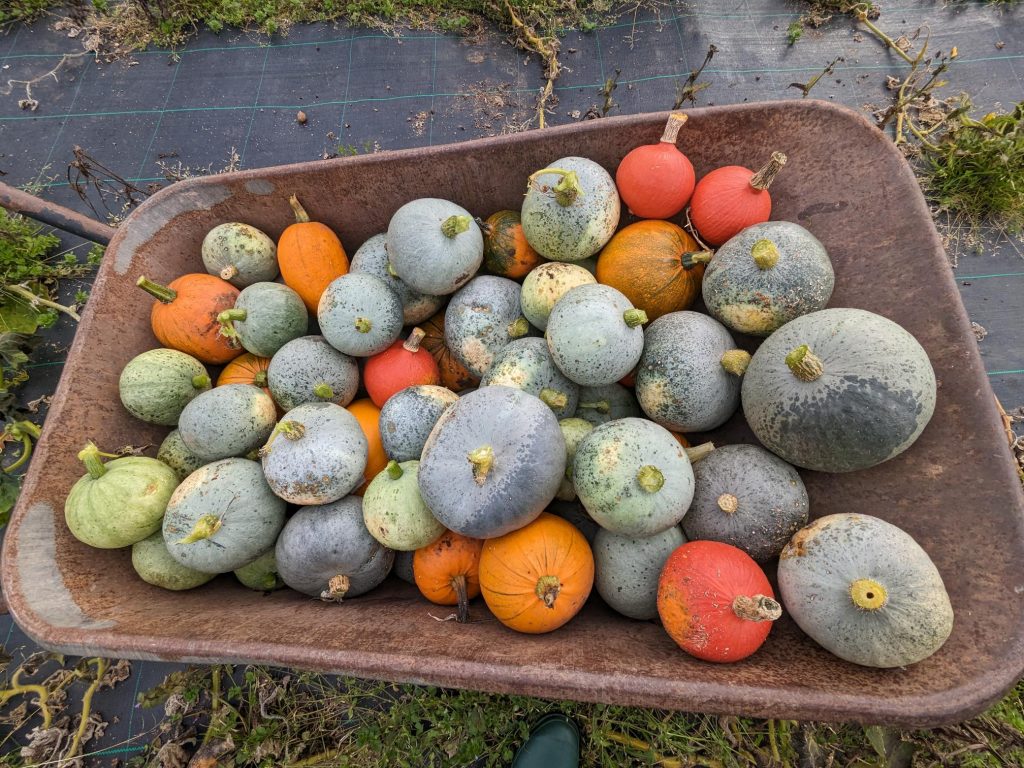
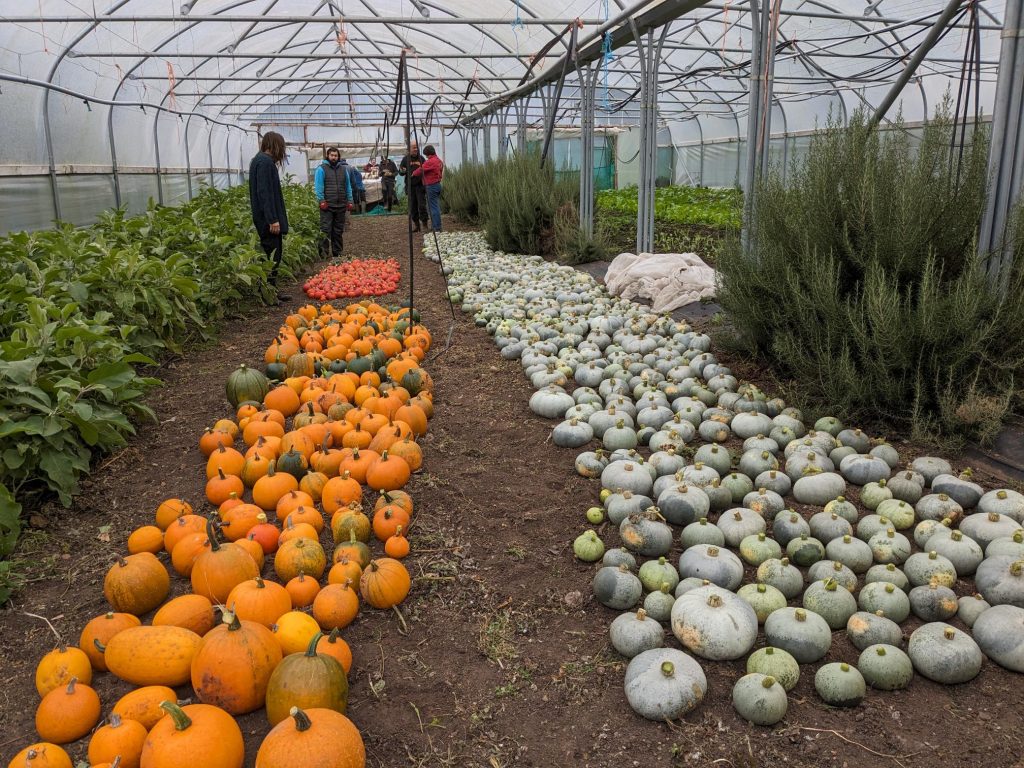
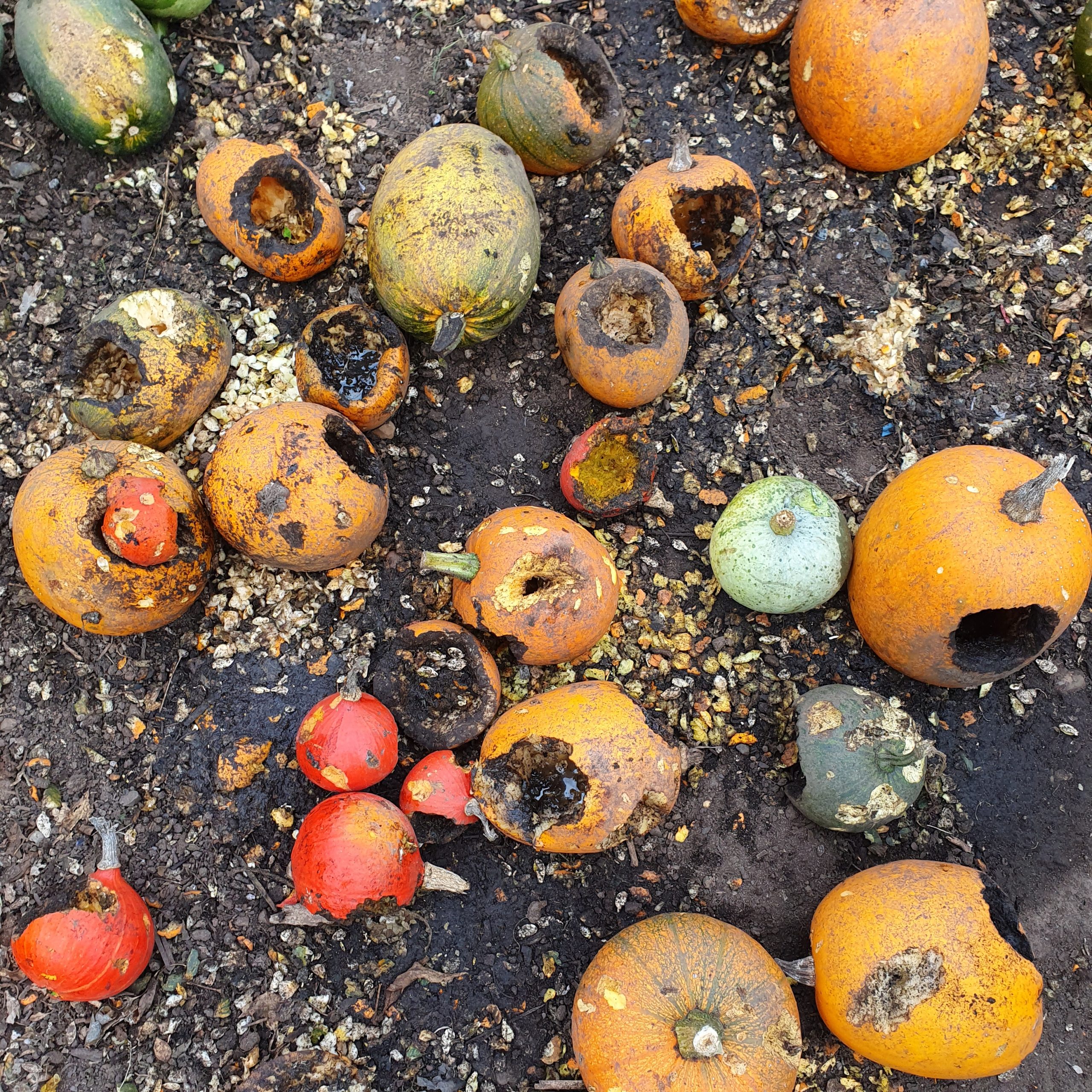
It’s feeling very autumnal on the farm at the moment as we’re in the thick of the main crop harvest season. The last couple of weeks have had some real ups and downs. After a great morning bringing in our squash and pumpkins to cure in the tunnels as usual, unfortunately rodents really went to town on some varieties in the space of one night. This is extremely upsetting after all the hard work to produce them and we are sorry not to provide Jack o’Lanterns this year for Halloween.
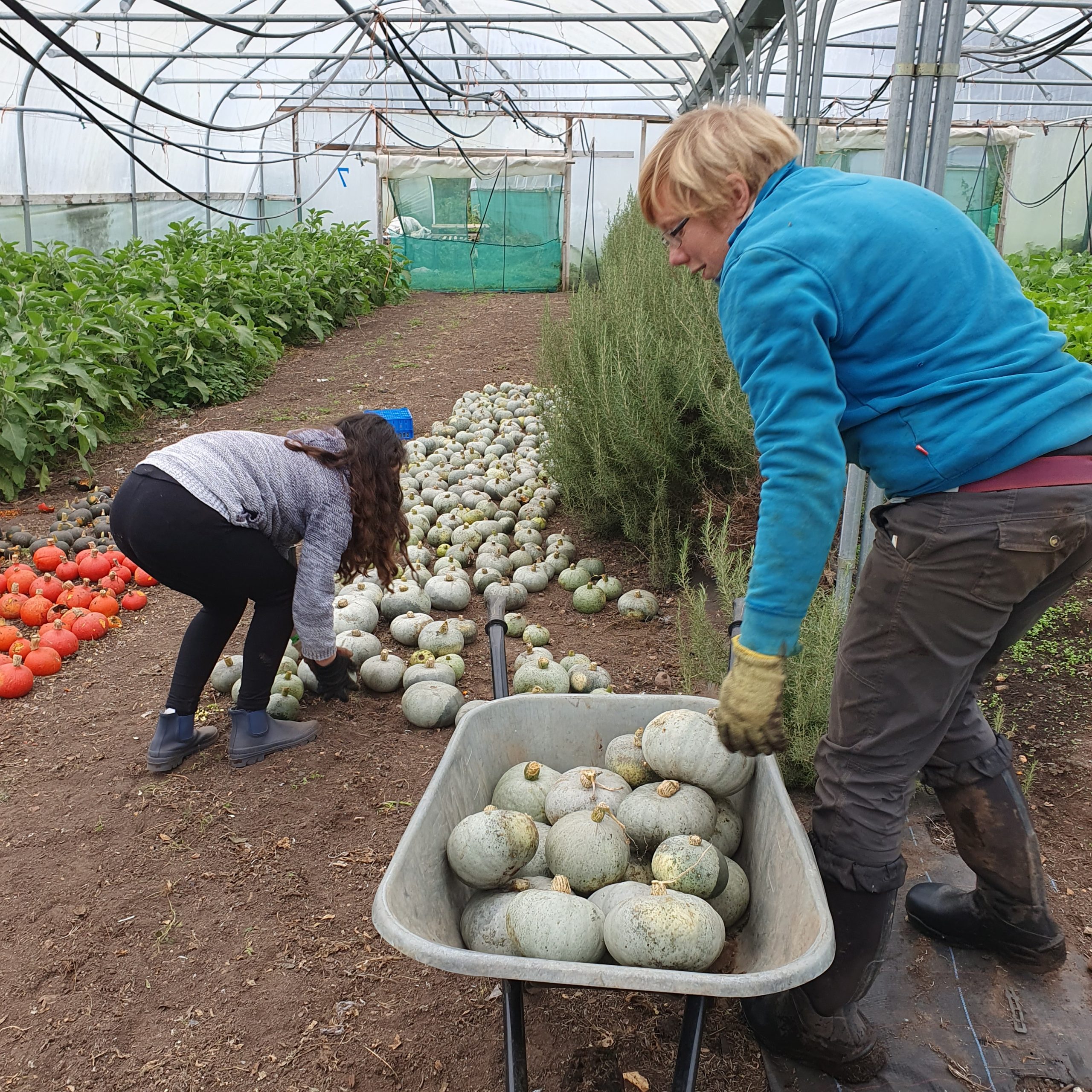
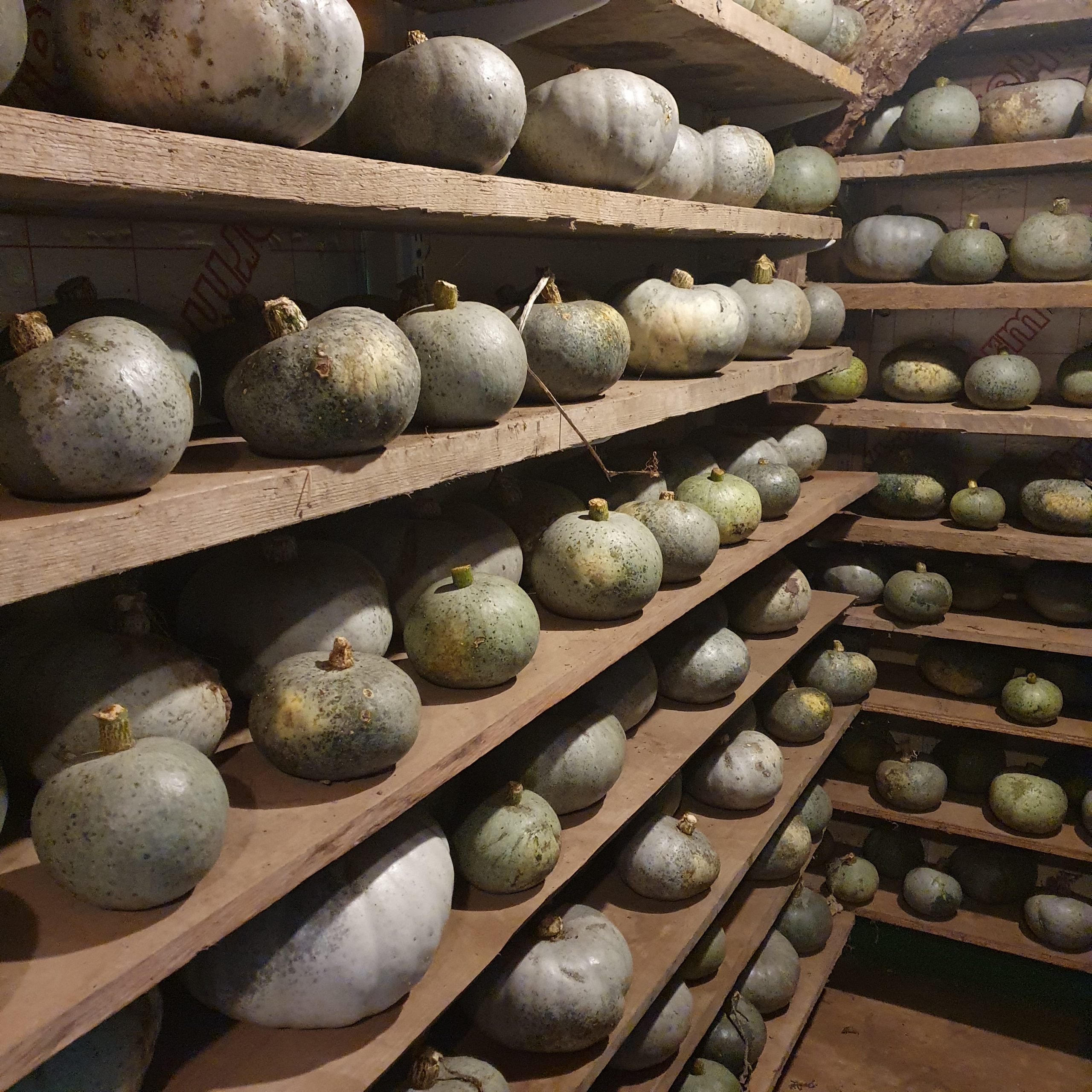
The good news is our maincrop squash – Crown Prince, the tasty blue/green one that see us through many months – thankfully went undamaged and we’ve now moved them into storage sooner than planned, so as to protect them. The other good news is our apple harvests have been great and maybe higher than ever. We’ve moved lots into storage and still have more to bring in so do come along next Wednesday morning to help bring in the remainder of the harvest – a good job for all ages.


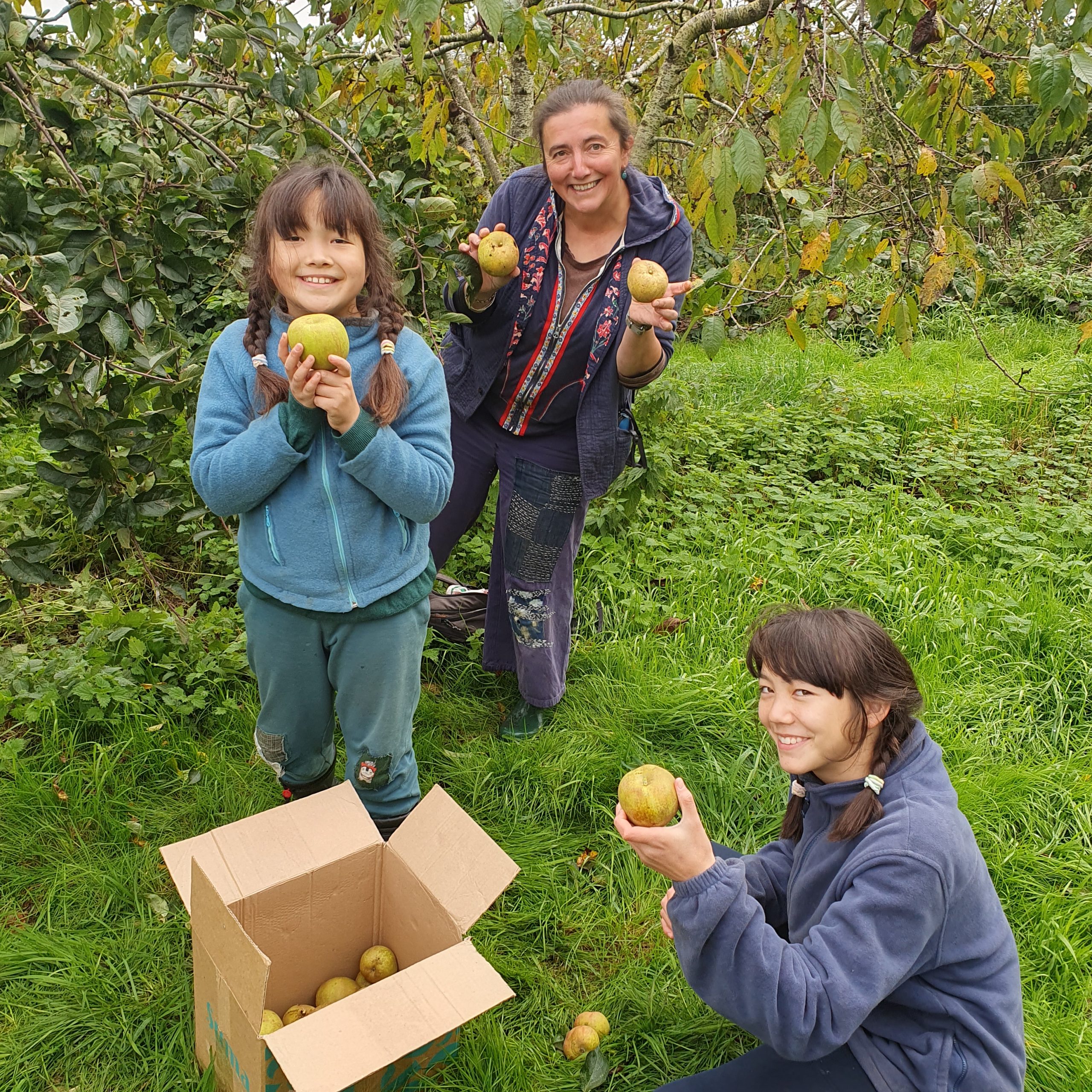
Eleanor, grower
(All photos Eleanor Brown unless credited otherwise)
2023: July news – Early summer shares
We’re happy to be harvesting the new seasons crops for the share. As plants develop slowly you will see you’re getting small amounts that will build up over time. We’ve heard a few people asking why the shares of certain things are so small at this time of year and the reason is because we only harvest according to the speed at which the plants produce. We were very happy to have tomatoes ripening as early as at the end of June, for example, and so you’ve been getting the very first taste of what the plants are capable of. They will be increasing over the months and last year we gave out the last tomatoes in November!
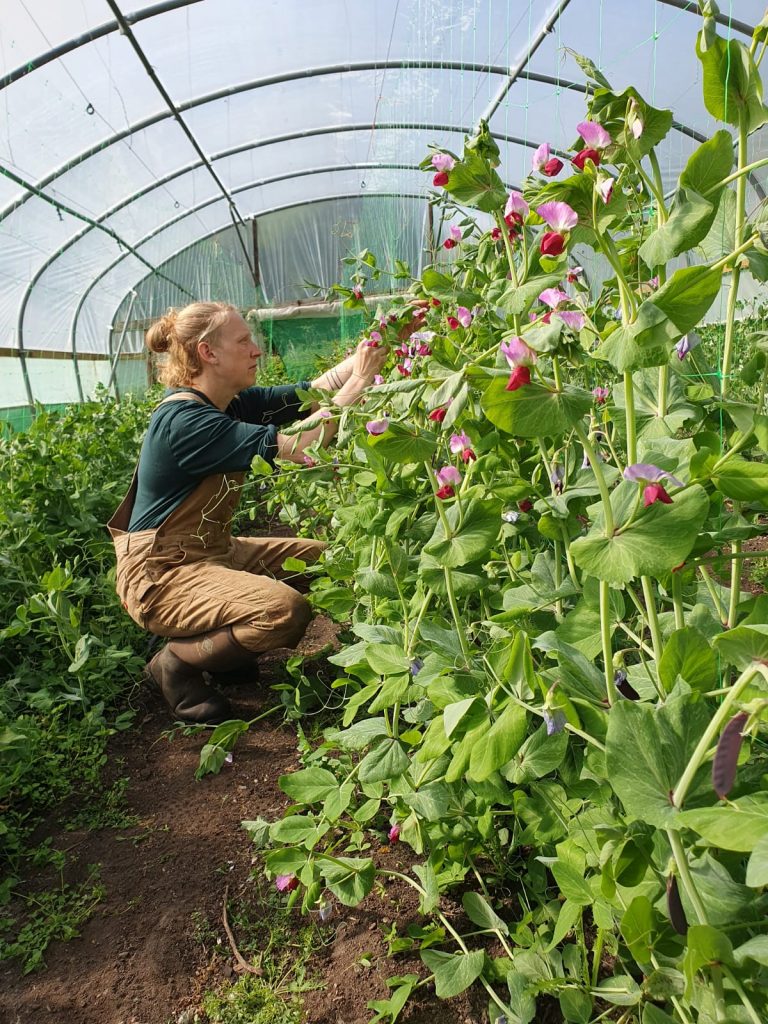
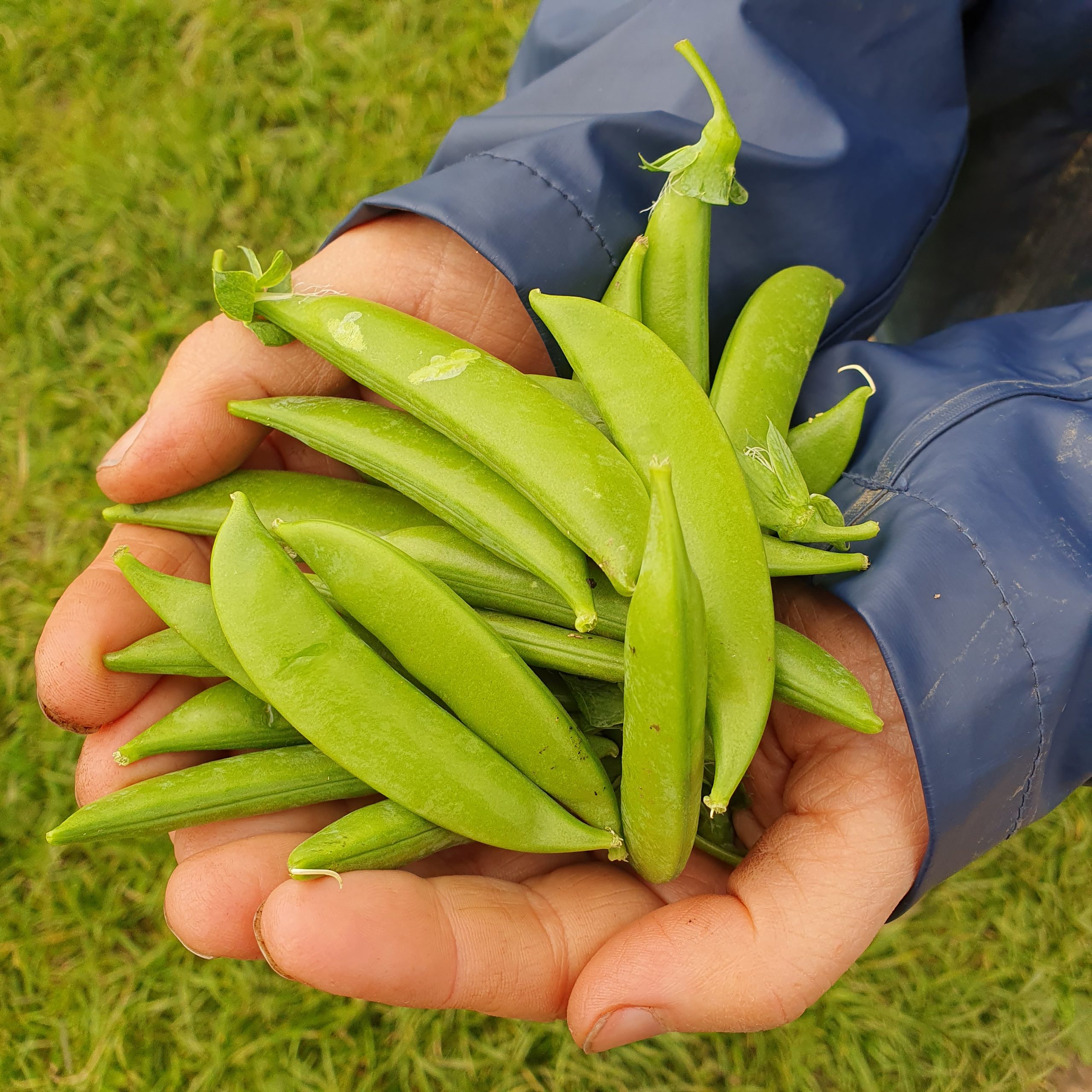
Likewise with the early potato and carrot shares – they’ve been growing in tunnels 1 & 2 since February, one of our earliest sowings, which we see as a bonus before the main potato and carrot harvests happen. The shares are smaller because there is only so much room in the tunnel and we want to space out what we have coming in and allow for some bigger carrots and potatoes to grow. The tunnels are hugely valuable growing space and we maximise their usage to be growing all year round. This week for example we are planting New Zealand spinach as soon as a bed was cleared where the potatoes had been harvested. The same goes for the carrots, as some fennel and dill have now been planted as soon as space was available.
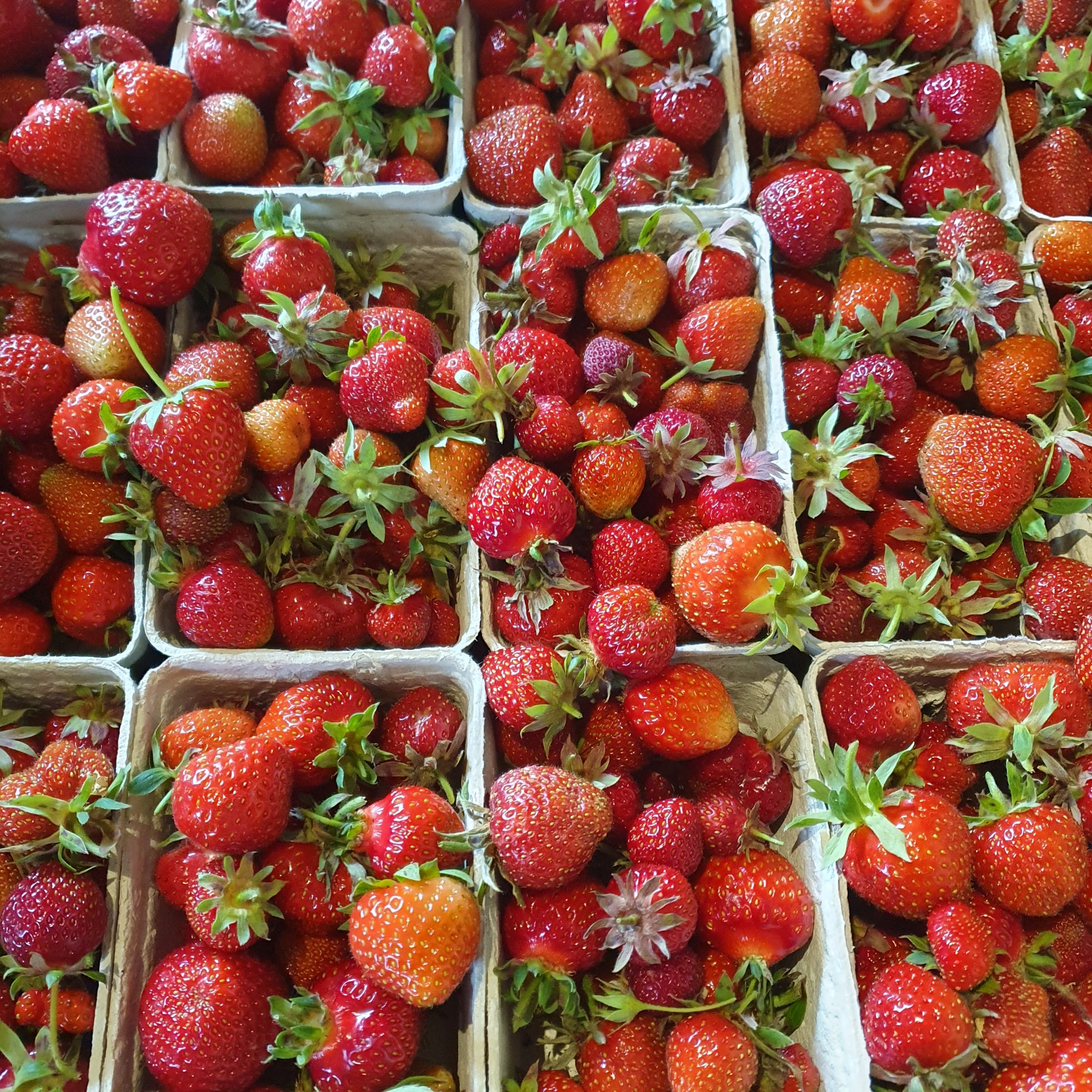
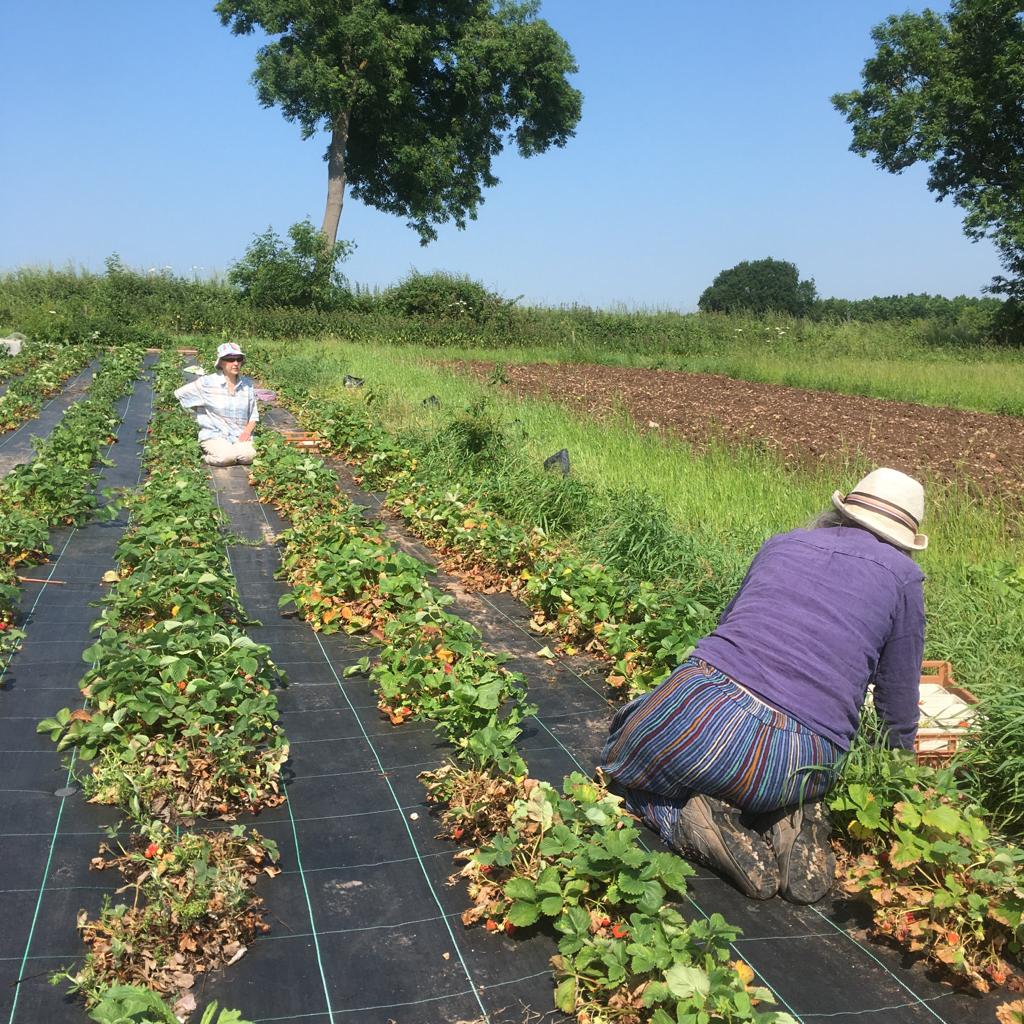
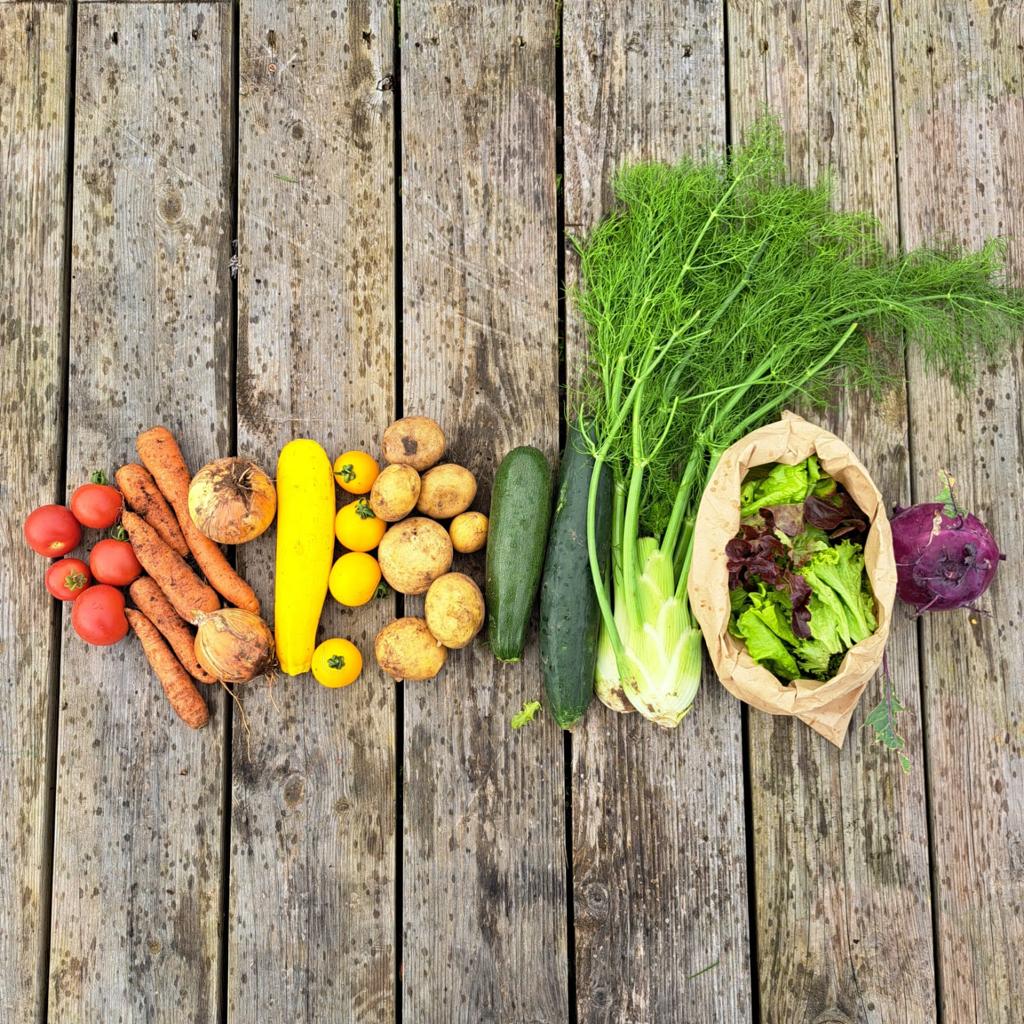
CSAs are unique in this way in that we share as fairly as is possible whatever we have growing to all our members. This time of year is one of the most complicated to work out, compared to when we have bulk harvests later in the year. Truly, I wish I had listened in maths class all those years ago because it is actually useful now!
Eleanor, on behalf of the growing team
Veg in the Spotlight – Rhubarb
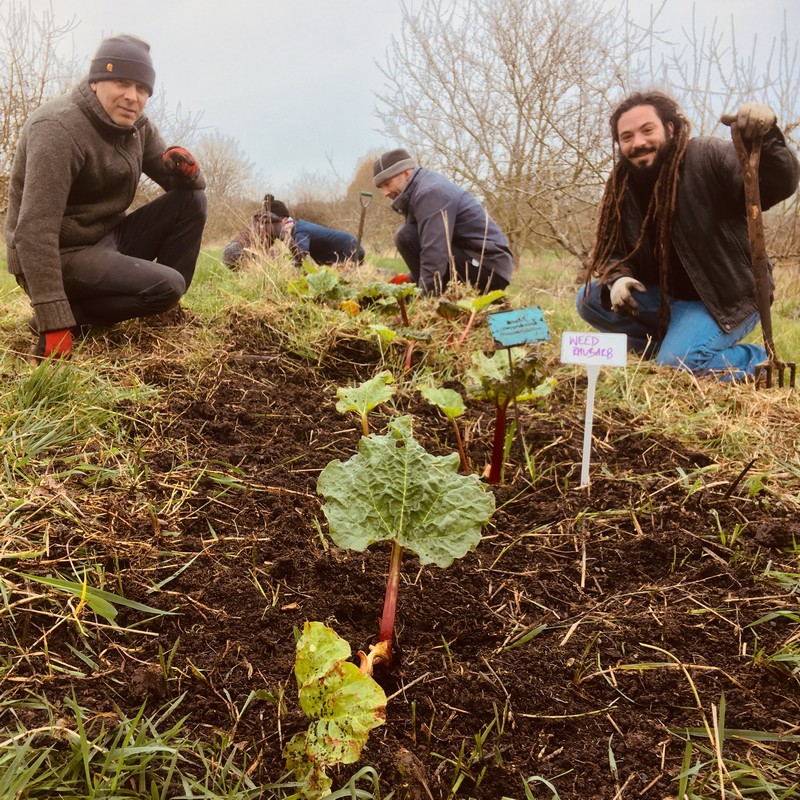
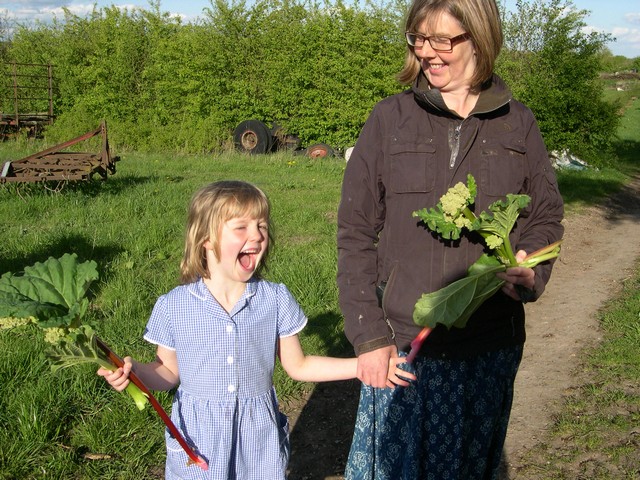
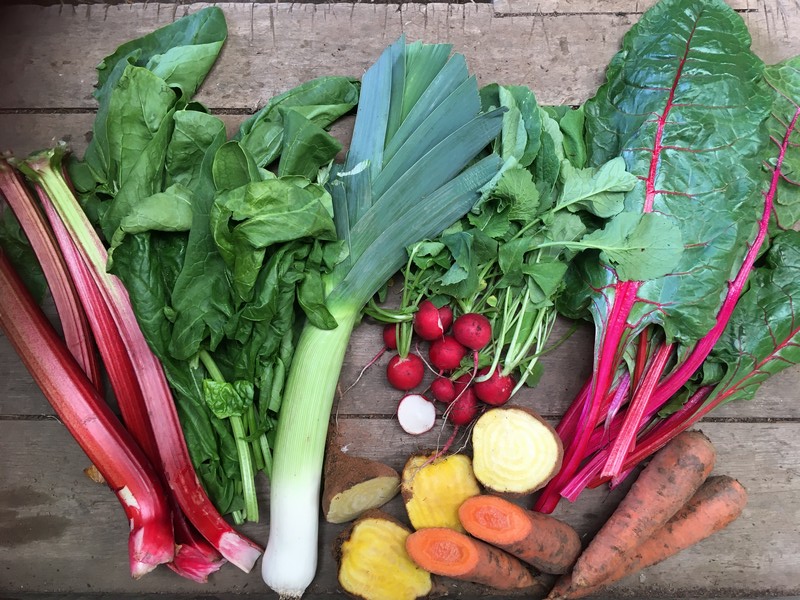
After its slow start to the year, the rhubarb is finally cropping well and arrived in the share this week with abundant measure! Knowing that it isn’t the easiest share item to use, the staff team put their heads together today to come up with some ideas for using your share.
Lena has fond memories of ‘rhabarber streuselkuchen’ (rhubarb crumb/crumble cake) from her childhood in rural Germany. Try this recipe.
Stephen’s top way to use it is as a compote, where the rhubarb is stewed with honey (you could also use chopped dates to sweeten, or of course sugar!). Ali likes to flavour a rhubarb compote with ginger (fresh if available, or dried) and/or orange juice and zest.
Nikki said she’s heard about rhubarb in curry, though she’s never tried it. Check out this recipe if you fancy giving it a go!
Other ideas from the staff team were:
Rhubarb cordial
Rhubarb ice cream (here’s a no churn recipe to try)
Rhubarb and custard (just like the traditional boiled sweet) using stewed rhubarb/rhubarb compote
Switch the last ‘Spotlight’s’ tarte tatin from onion to rhubarb.
This page from BBC Good Food has a wealth of ideas, from the classic rhubarb crumble, through delicious sounding rhubarb and custard scones and cardamon, rhubarb and ginger French toast traybake, to intriguing Russian shashlik with rhubarb sauce. And why not some rhubarb gin for a party later in the summer?! Plus a dozen more other ideas (the title lies – there are far more than 10 recipes!).
And if you have a copy of The Boxing Clever Cookbook (easily available secondhand for a few pounds) there are another 7 rhubarb recipes – including the more unusual rhubarb bread for bread making machine and rhubarb with lentils and potatoes. This book is a great resource for simple recipes for the classic vegetables of a seasonal box scheme, including loads of ideas for winter roots such as parsnips and swede (after all it was written by members of Earthshare CSA in Scotland!).
If you try any good recipes that other members might enjoy, why not share them on the Facebook group?
Ideas from yesterday’s staff team!
Veg in the Spotlight – Onions

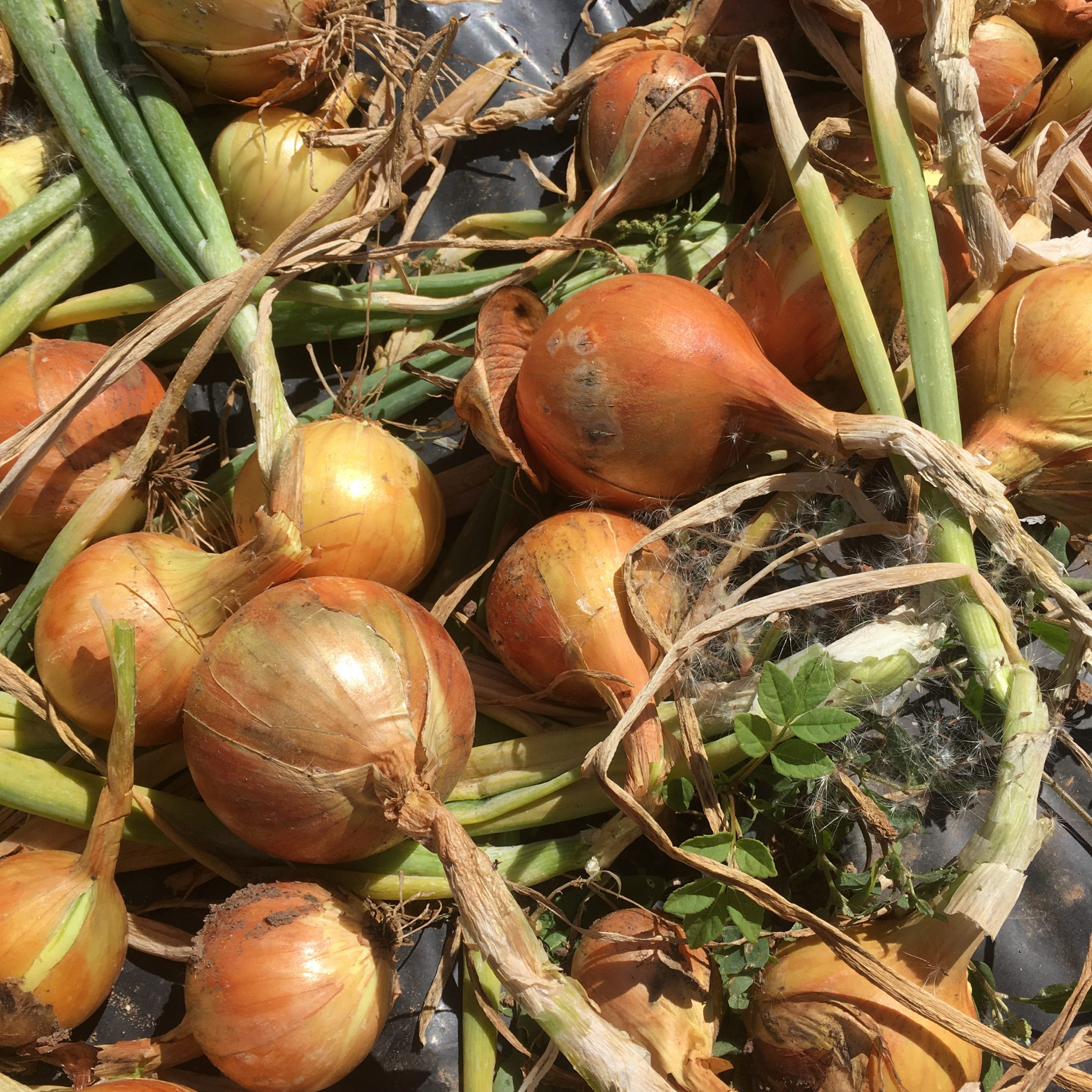
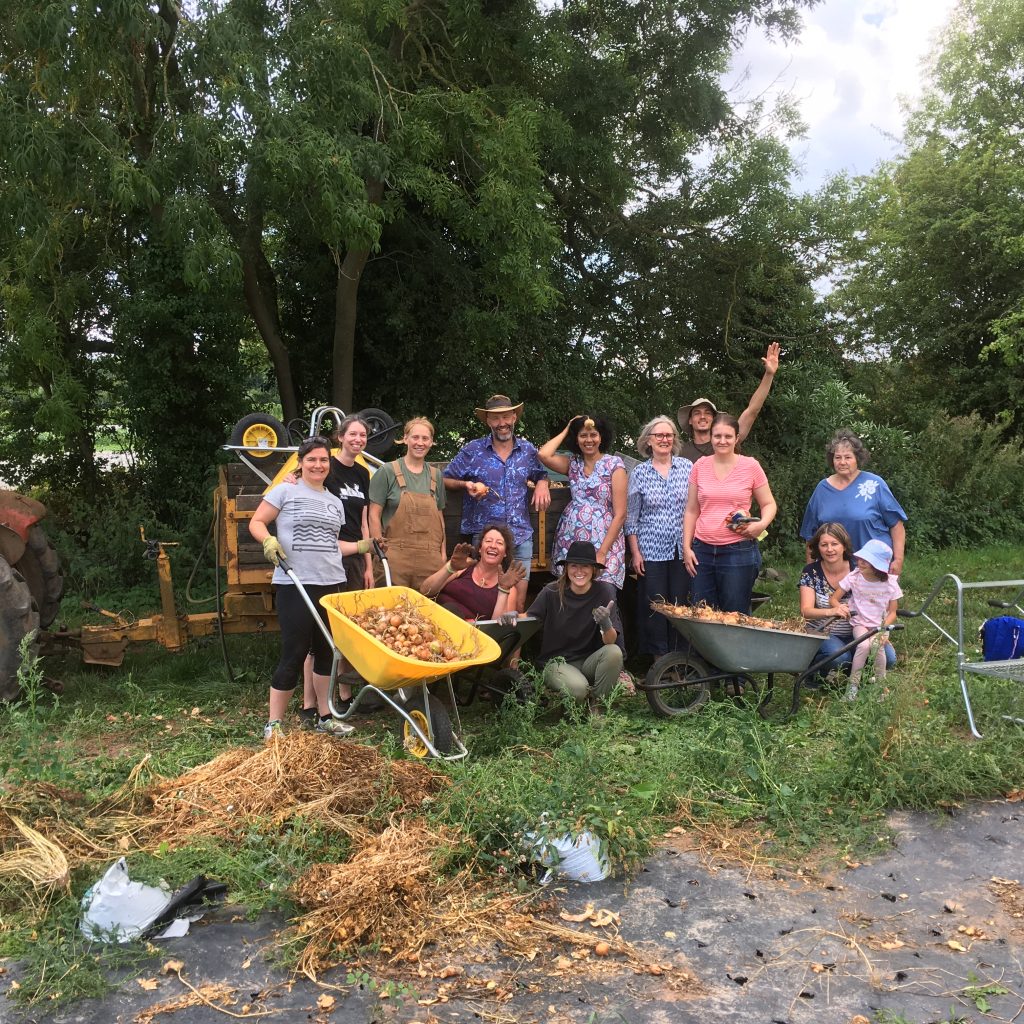
You may have noticed that the onions are beginning to be a little past prime condition as they have been in the store since last August: many are beginning to sprout in a bid to put in some growth this year, and we’re grading them carefully before each collection to try to ensure we only put out edible ones. As they won’t be usable for much longer, and the autumn planted onions in the field and spring onions are nearing readiness, the growers have increased the share of onions this week to 600g for a medium share – double what it’s been over the winter. We’re expecting another couple of weeks of last year’s crop.
So, what to do with this abundance of onions? Here are some ideas from Chef Lena, with a distinctly continental European flavour!
Fermented onions: turn them into a delicious condiment that softens the texture and the spiciness of raw onions – this blog post will tell you how.
Flammekueche: a Franco-Germanic version of pizza topped with onions, bacon and soured cream/creme fraiche. If you’re interested in the ins and outs of the perfect flammekueche, this Guardian article can oblige. If you just want the recipe, scroll down quite a way, or seek out a different website!
Tartiflette: similar to flammekueche without the pastry/bread base and with the addition of cheese, from the slightly more northern French region of Haute Savoie – try this BBC Good Food recipe for it.
French onion soup: you’re spoilt for choice when in comes to recipes for this classic soup which needs plenty of onions – it could easily use 2-3 weeks’ worth of shares (depending on your share size). This one makes a grand claim – see what you think!
Tarte tatin aux oignons: another classic, though tarte tatin more commonly made with apples. Why not give Jamie Oliver’s recipe for a version with onions a go?
Text from Ali, ideas from Lena
Veg in the Spotlight – Leafy tops
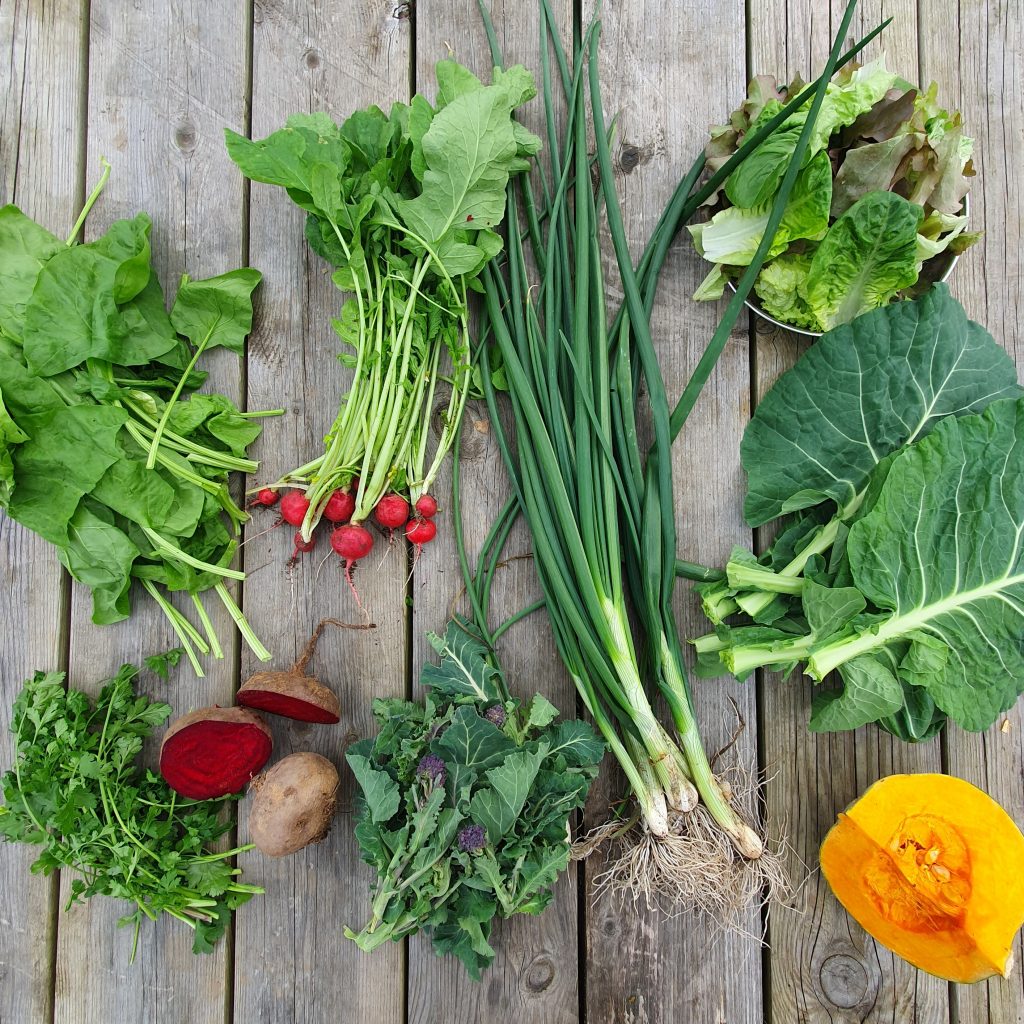
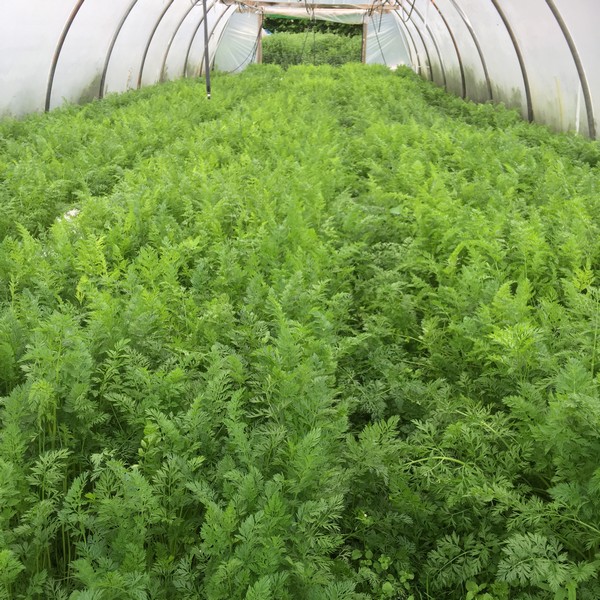
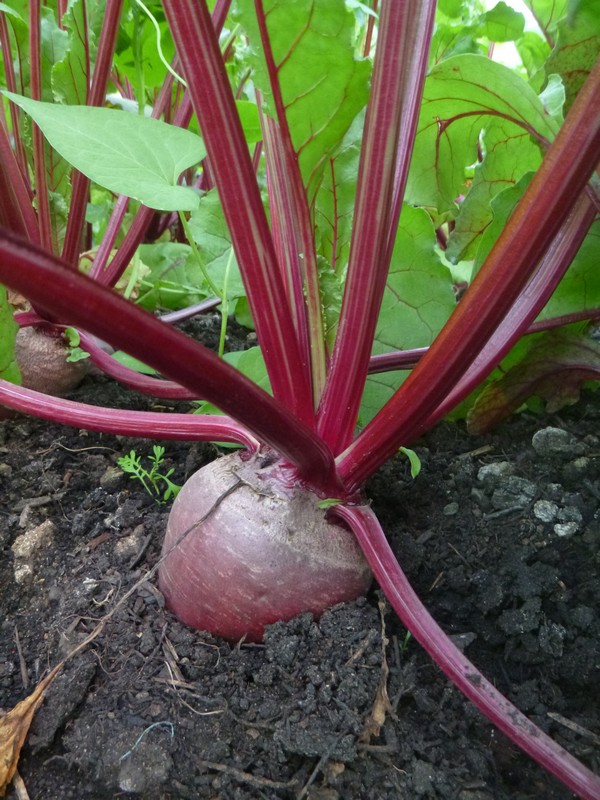
We’re coming into the time of year for the earliest crops and, especially where they are roots, the young tender leaves can be as much an ingredient as the root veg. This is why we include them in the weight of the share – you will take the roots with any attached leaves in the weight for your size of share and get 2 share items in one!
Here are some insights about what might be coming in the share and ideas for how to make the most of all the edible parts. As a general rule, they all work well added to/as a basis for pesto, and in hummus, as well as like other greens in soups, stir fries and smoothies.
Radish tops:
As appeared in the share this week
The slightly rough/prickly texture on the surface of the leaves is lost with cooking
Try:
Chopped and used in stir fries, soups etc, as for any other green
One of the 5 ways suggested here
Carrot tops:
Will be in the share on the first baby carrots
Try:
Carrot top pesto
Roasted baby carrot and grain salad with carrot top dressing
More ideas and recipes here
Beet tops:
Similar to chard
Come with the first baby / early season beetroots
Try:
Braised beet tops with lemon juice
A number of ideas from Oddbox
Fennel tops/fronds:
Basically dill, and always plentiful on our fennel bulbs!
Try:
One of the 10 ways suggested here including in a pesto and salads, as a herby flavouring, in juices and curries
Celery tops:
Full of flavour and a great ingredient for a variety of uses
Try:
One of the 5 ways suggested here including in soups, to flavour salt and in a pesto
Ideas from Ali
Veg in the Spotlight – Spring greens
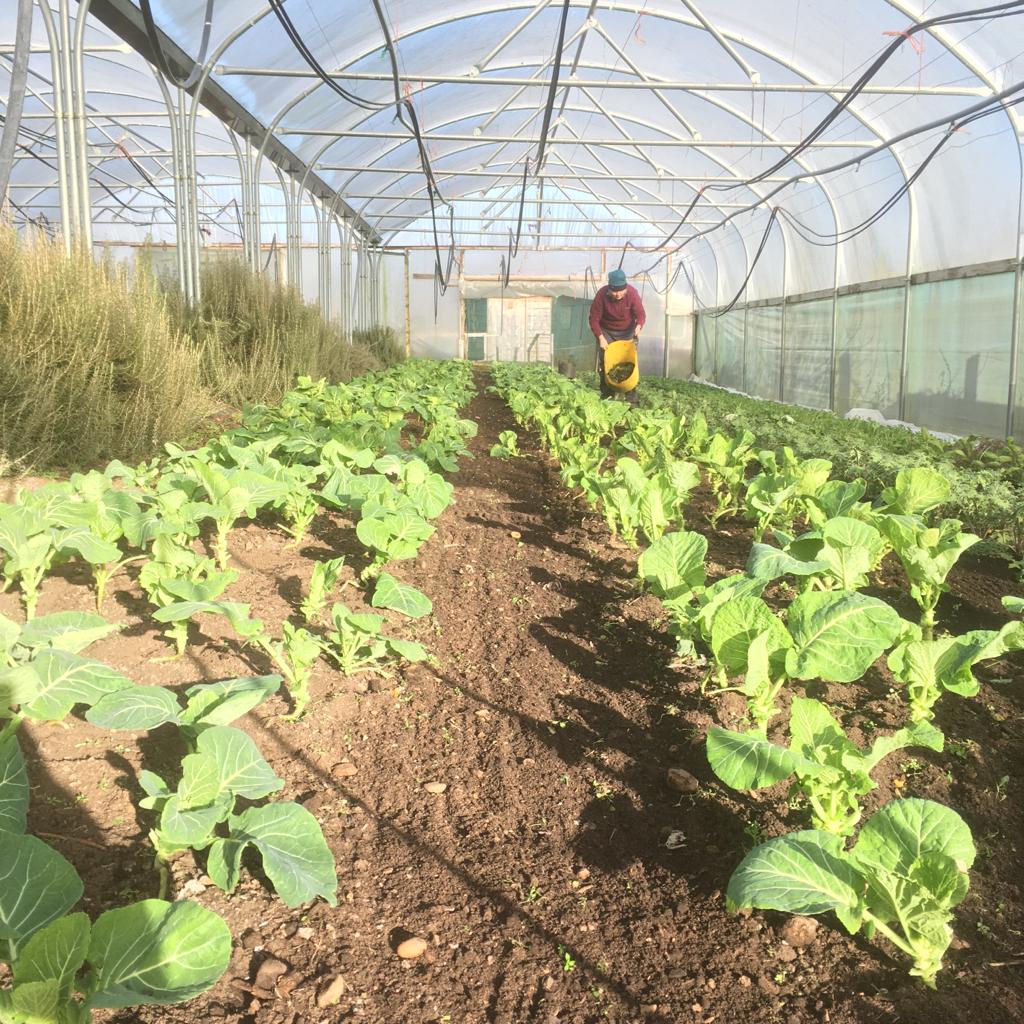
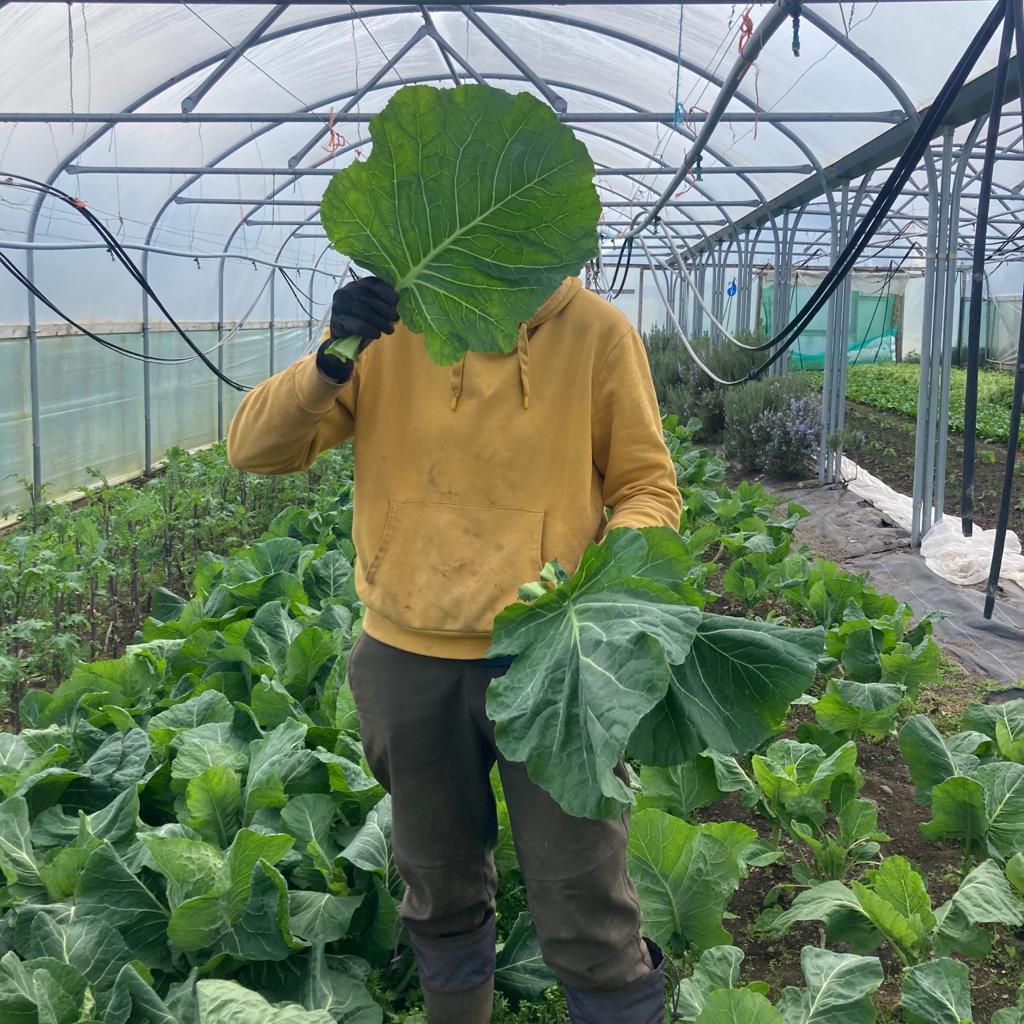
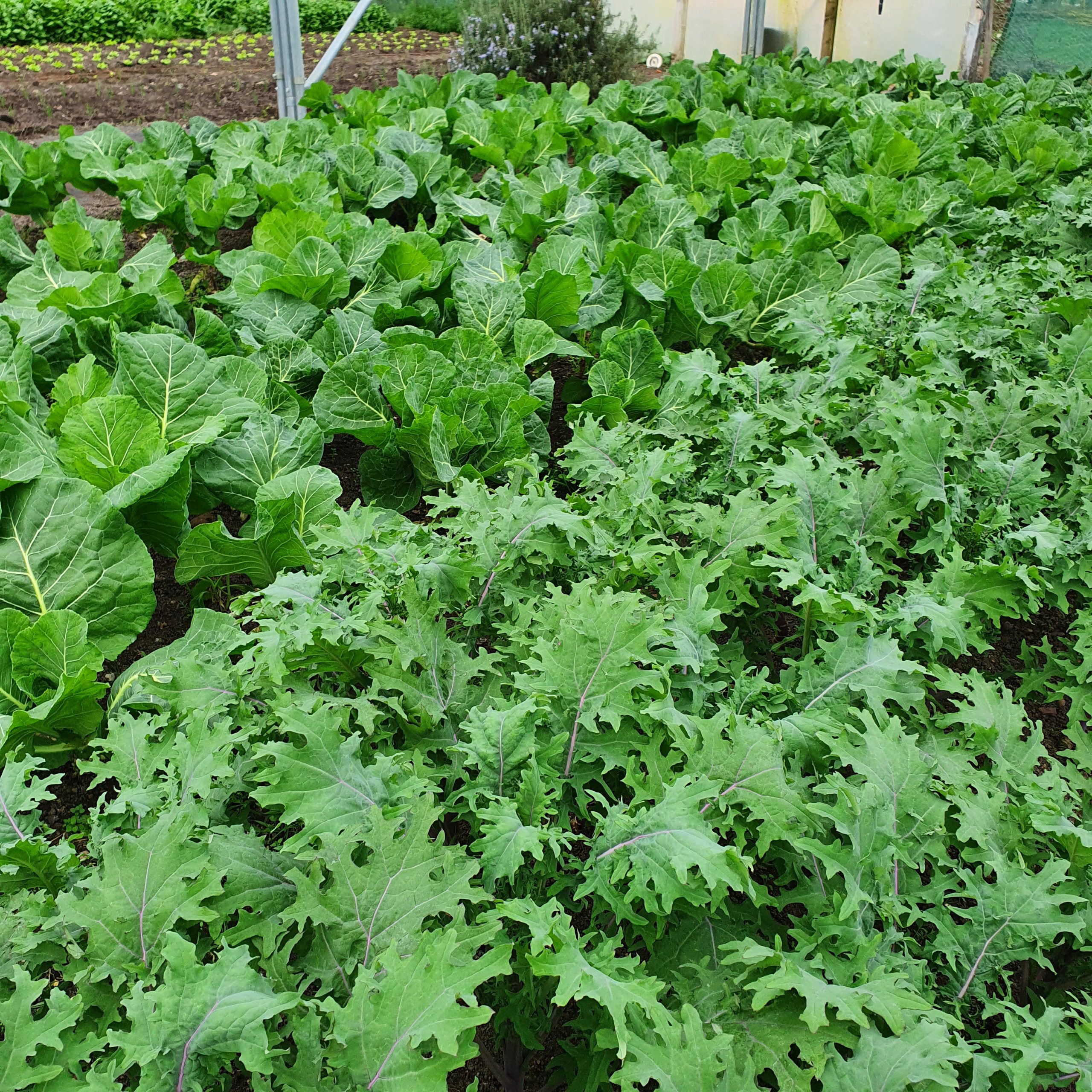
Spring greens are a member of the brassica (cabbage) family of vegetables and are essentially the first cabbages of the year. As such they form an essential part of the Canalside veg share during early spring – as you will have seen from having them in your veg share for the past few weeks. Their leaves don’t form hard hearts like other cabbages, instead growing as loose leaves that are plucked from the plant. This allows more leaves to grow, meaning leaves can be harvested from the same plant over a period of weeks.
As a leafy green vegetable, spring greens are rich in iron, as well as a great source of vitamins C, E and K, and calcium, potassium and fibre too! They are delicious steamed / cooked as you would cook Savoy/white cabbage, brussels sprouts etc. and served generously seasoned with salt and pepper and a dollop of butter. Don’t discard the stems – just slice them a little more thinly than the leaves. As with all brassicas, it’s best to avoid overcooking to enjoy the best flavour.
Why not try other ways of cooking them:
As the star attraction with extra nuggets of deliciousness:
– Fry pieces of bacon or pancetta until browned and then add sliced spring greens and continue cooking until tender
– Stir fry with chopped garlic cloves and fresh chilli then add a dash of soy sauce before serving
Added near the end of cooking to your favourite recipes, as an addition or in place of cabbage, spinach or chard:
– Stir fries
– Risotto
– Stews and casseroles
– Pasta dishes
– Juices
More culinary inspiration here:
BBC Good Food
Olive Magazine
BBC website food section
Ideas from Ali
2023: April news – The Spring Glut!
It’s been very heartening in the last couple of weeks to be harvesting an abundance of fresh greens again alongside seeing our polytunnels bursting to life. There’s nothing quite like the green of new growth to lift the spirits and we’re now into our spring glut which is always a welcome addition to the root vegetables that have seen us so well through the winter.
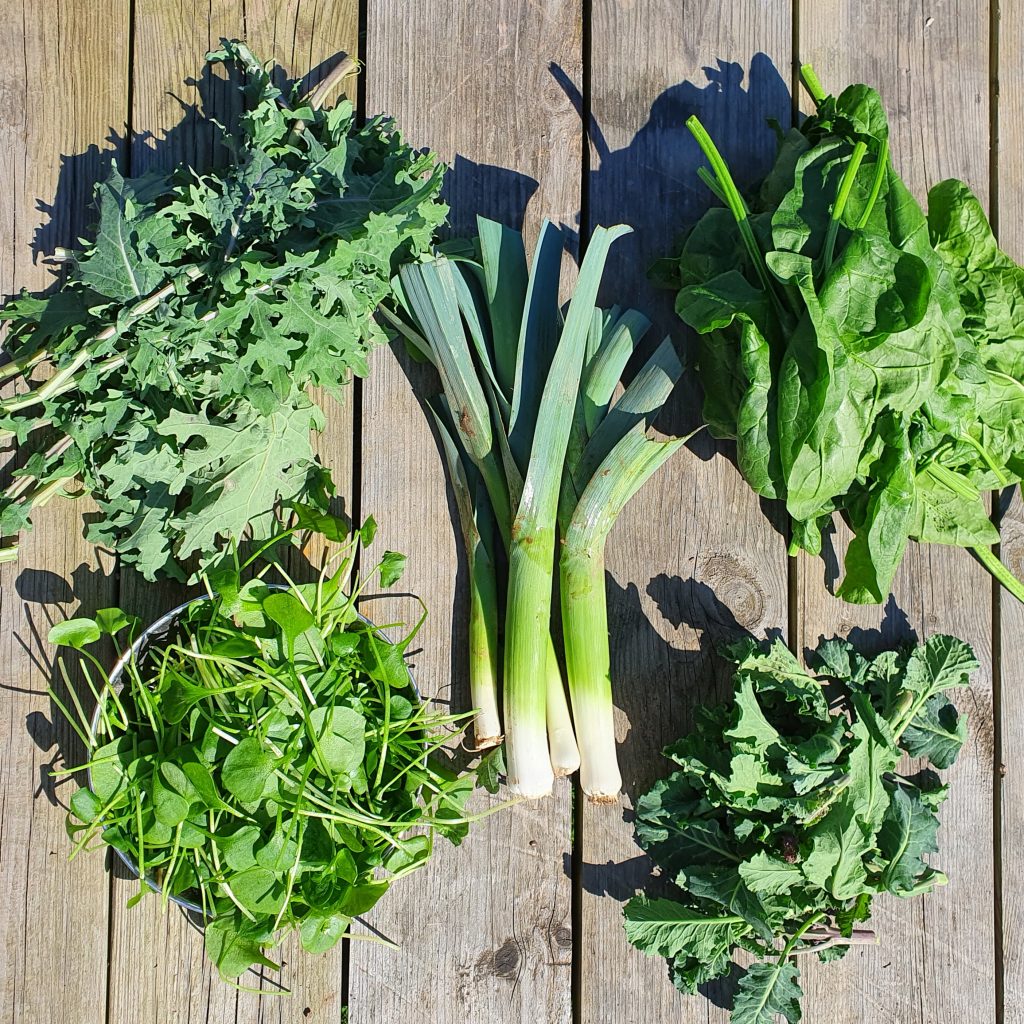


We bring you as many greens as are possible to grow locally and seasonally during the winter, thanks to a good crop rotation and our polytunnels. We overwinter certain plants like spring greens, kale, salads, spinach, spring onions, chard and more which means they get planted in the autumn, grow slowly over winter where we harvest occasionally but as soon as there is more light and heat we can get them in the share more abundantly. As we’ve been banging on about for months, there were crops that really suffered this year – brassica greens that would normally supplement the roots all winter like oriental salads, cauliflowers, purple sprouting broccoli and cabbages were massacred in the frosts so we have been working hard to eke out what we can. I don’t think we’ve actually had one week all winter where there’s been nothing green in the share which is to be celebrated more than ever this season. We were so happy to get some caulis and cabbages to everyone despite them being on the small size, and now our later variety of PSB is finally harvestable.
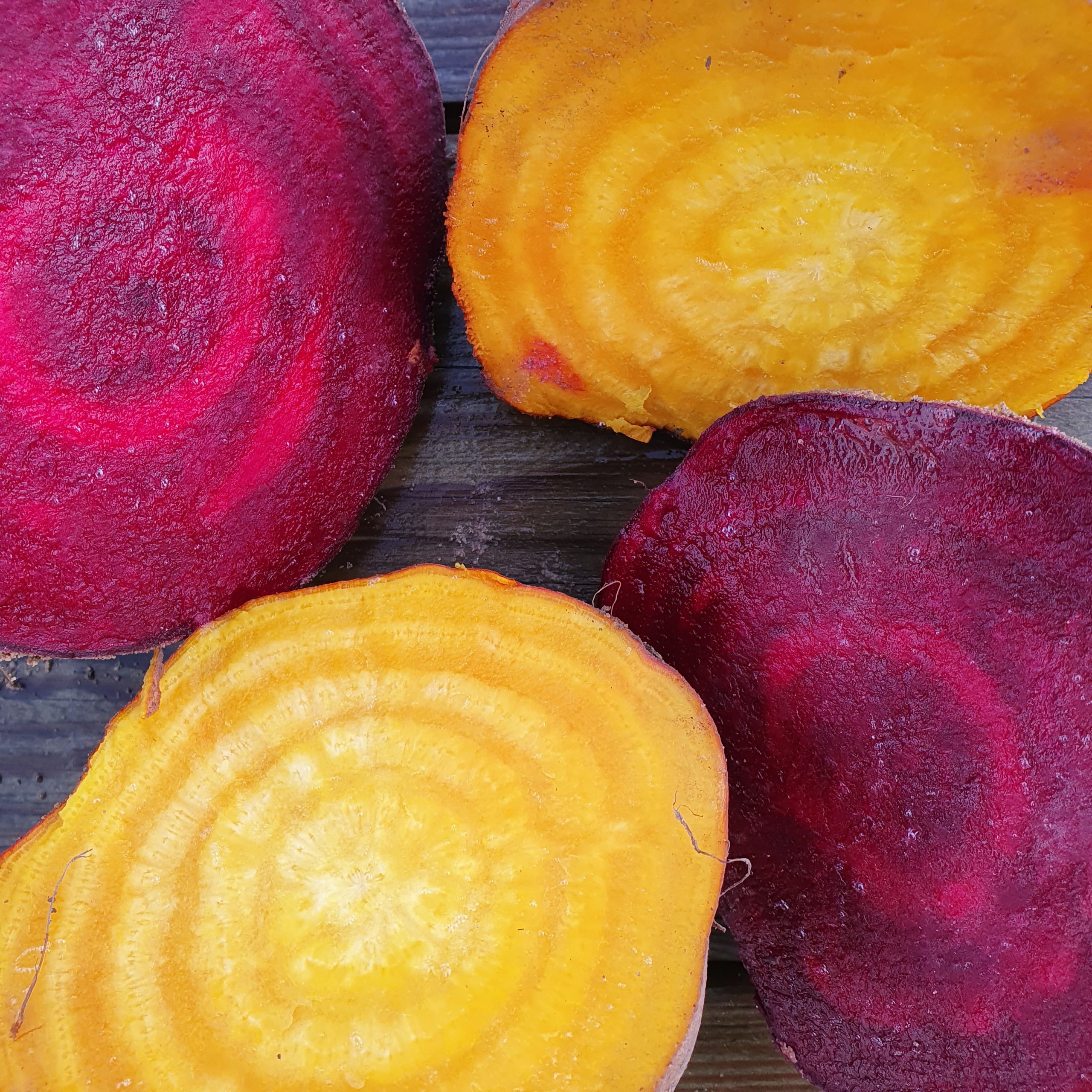
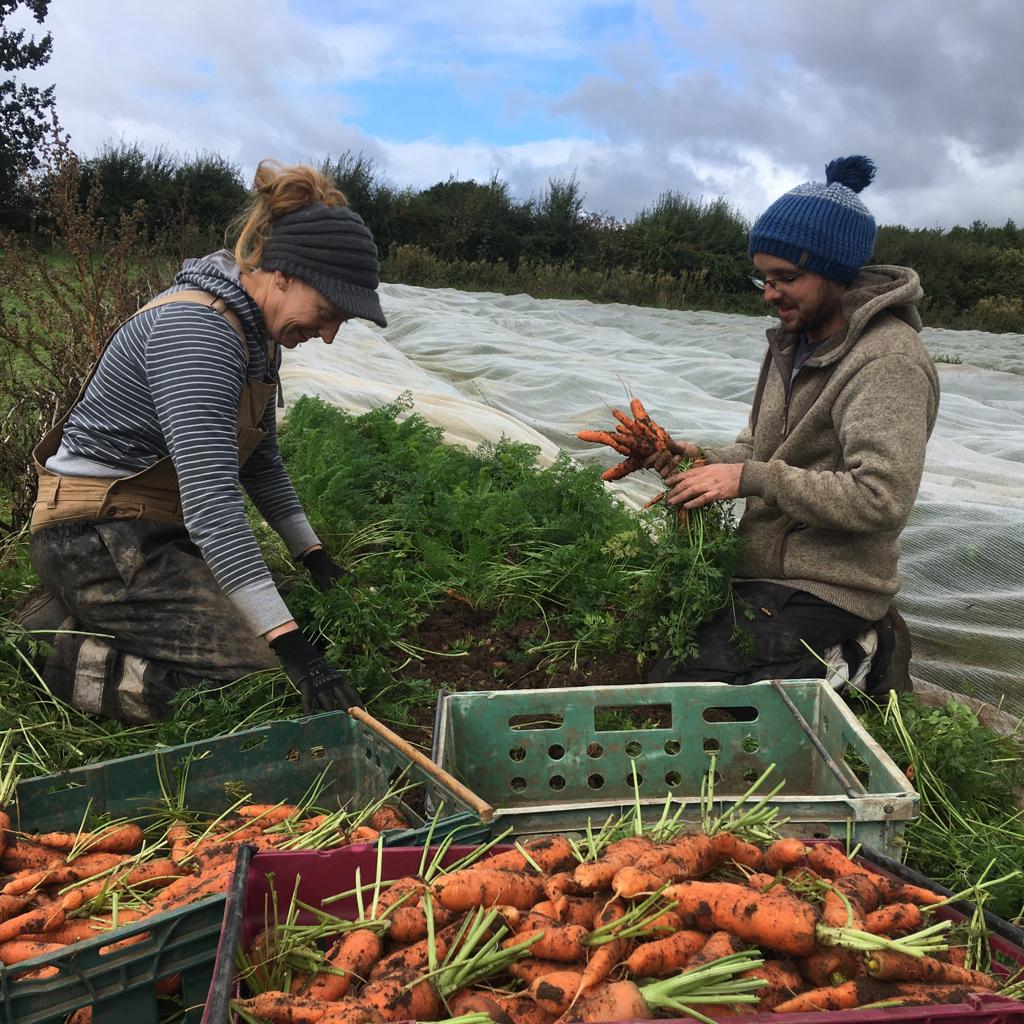
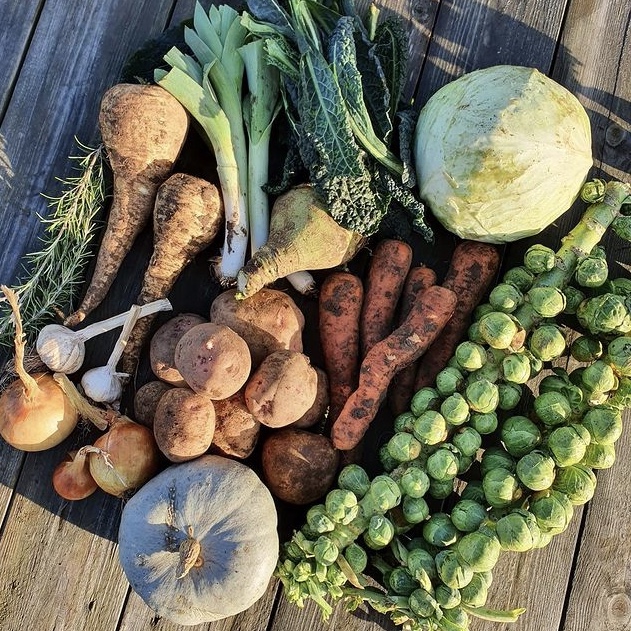
And in celebrating the greens, I also want to give a shout out to the roots that have seen us through the winter so well. I’ve noticed how easy it is to bemoan our root veg as we have become so accustomed in our culture to having whatever we want whenever we want. There would have been a time when the root veg was all that was available during the winter. For the winter share and beyond we always grow potatoes, carrots, parsnips, swedes, squash, celeriac, red and golden beetroot and jerusalem artichokes alongside a steady supply of alliums, which when you list it all together it’s actually quite diverse and nutritionally rich.
So all that being said, we hope you enjoy the last weeks of these roots, alongside the abundance of the spring glut!
Eleanor, on behalf of the growers
Veg in the Spotlight – Beetroot
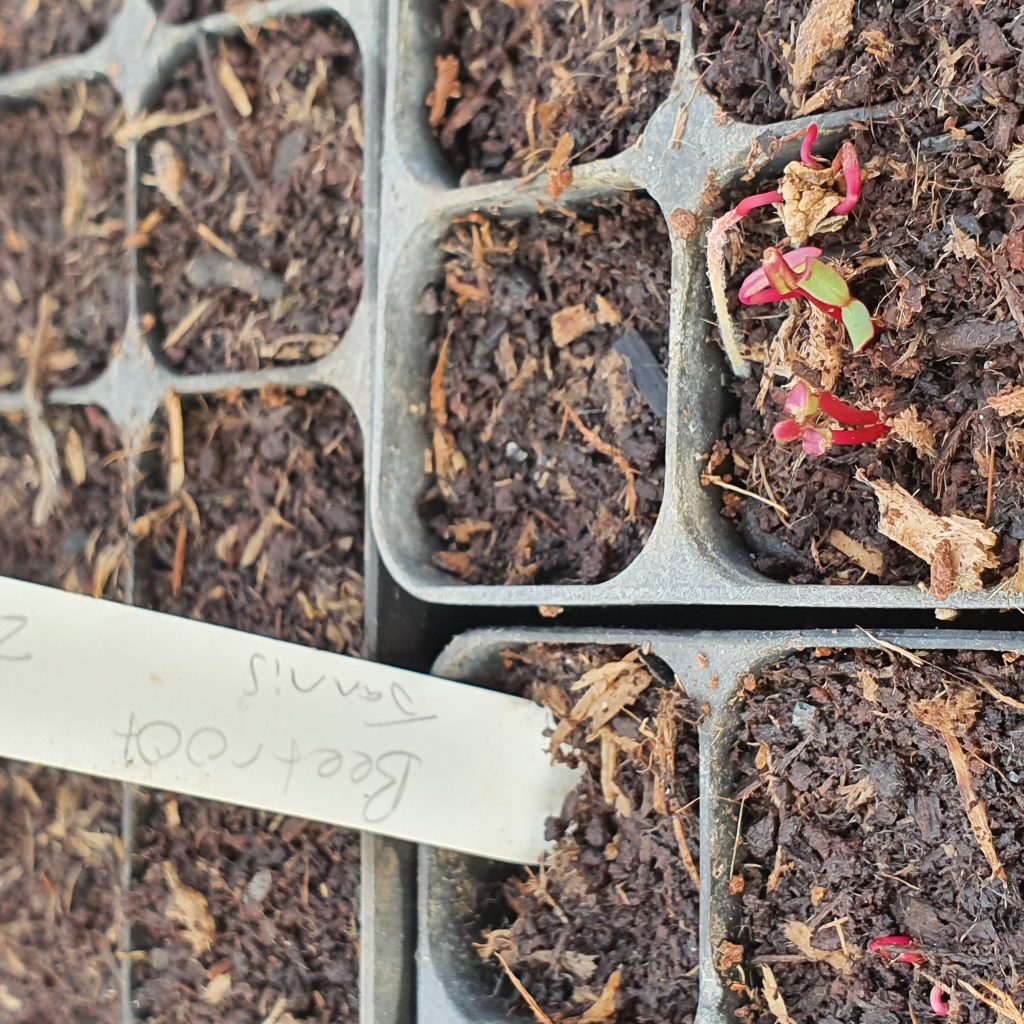

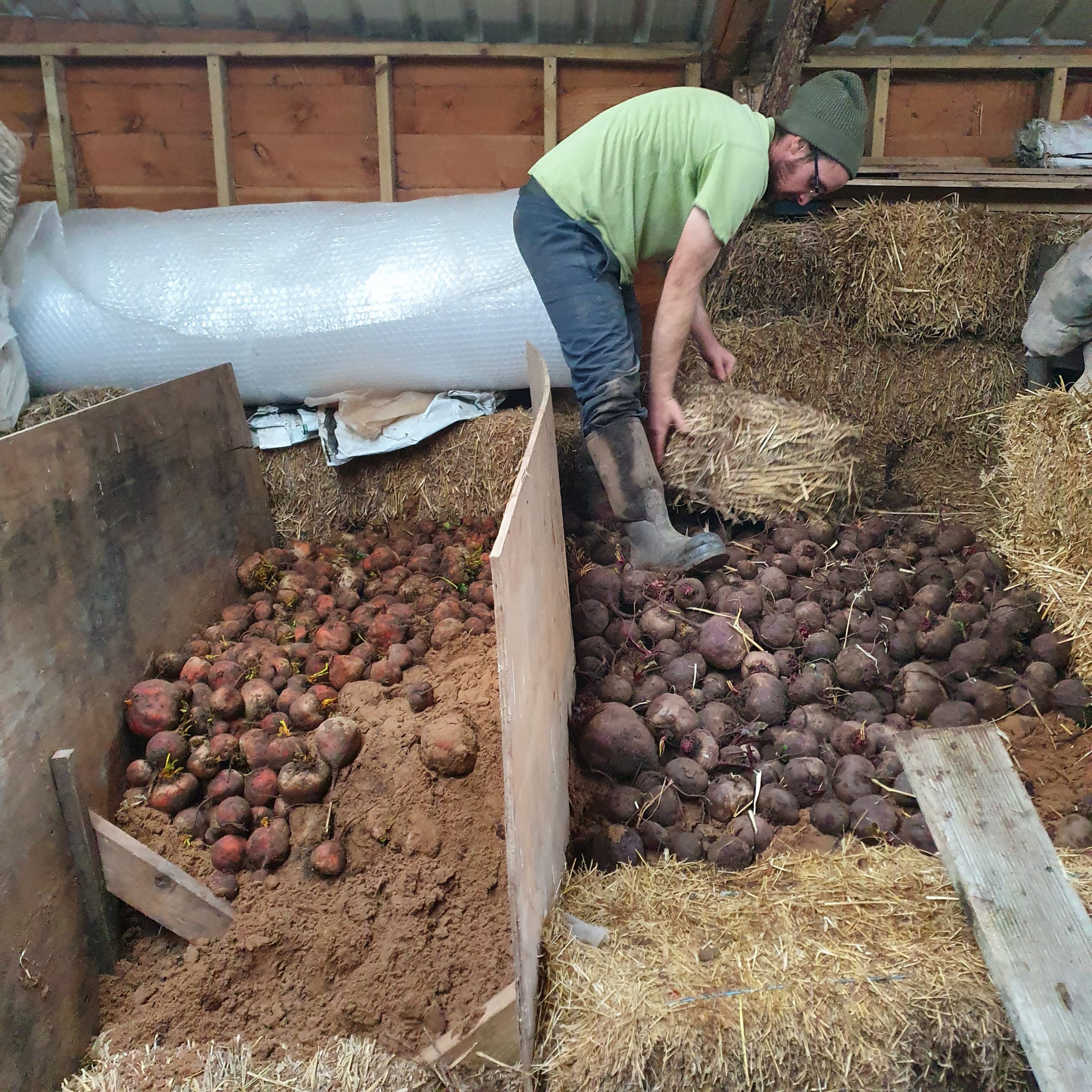
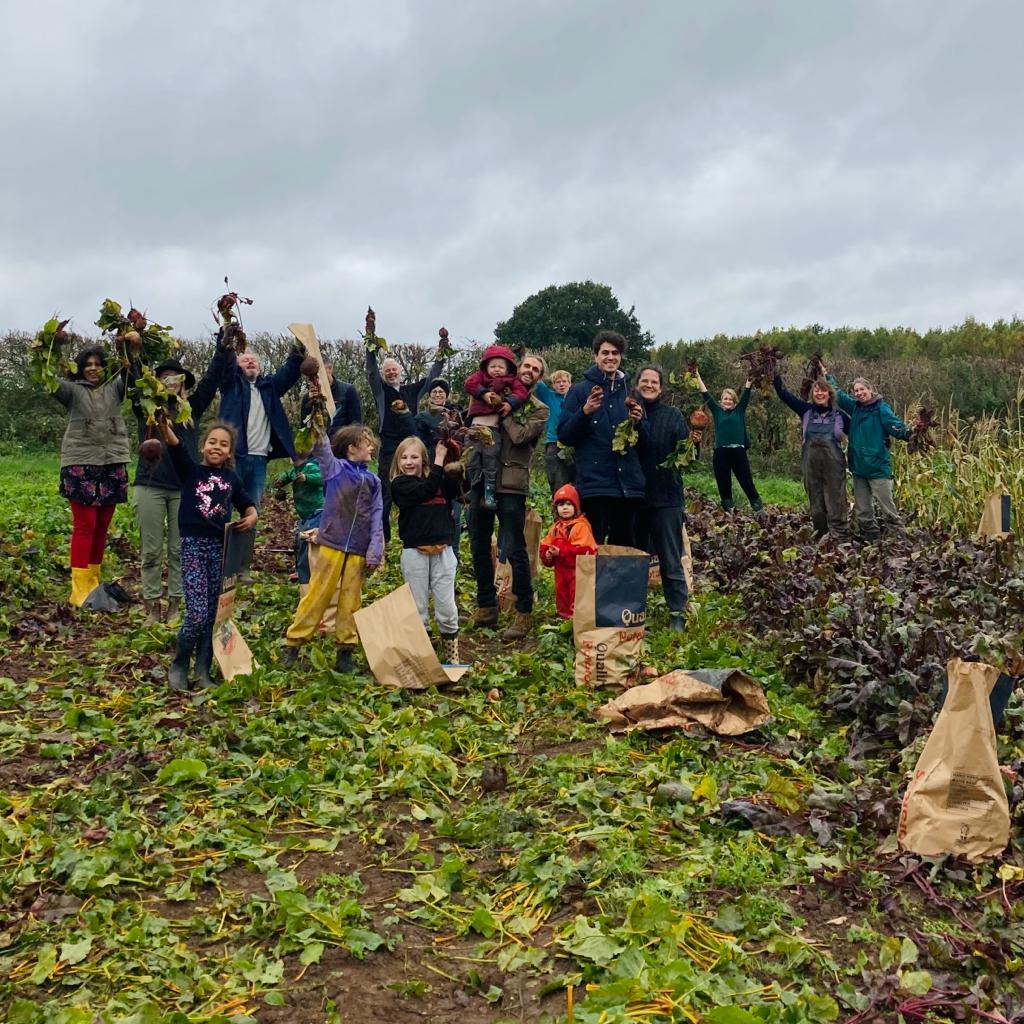
Beetroot (both golden and purple/red) have been in a share regularly over recent weeks as we had a good harvest last year. They are a staple of our winter shares since we can store them well in damp sand ‘clamps’ through the winter and into the spring. Here are a few ideas for how to use them if you’re finding it difficult to get through the quantities in the share:
Beet kvass – fermented beets
Fermenting is a great way to increase the nutritional value of a food by introducing ‘friendly’ bacteria that help give a diverse microbiome in the gut when they are eaten. It also helps to extend the shelf life of food and spread useable period across a longer stretch of time, as you can be eating the food fresh while a batch is fermenting and then eat the fermented foods after that.
Here’s a link to the recipe I’ve been using for several years. It produces tangy cubes of beet and a thick liquid you can drink as a tonic or use in a number of other ways suggested in the recipe. If it develops a white scum on the surface, just mix it in. Use something to keep the beets below the surface, eg. a jam jar that fits exactly inside your fermenting container (a larger jar in my case), and this will prevent lumps of mould forming.
Beet soup aka borscht (this is an adaptation of the recipe in my old and well used copy of the Cranks recipe book)
Chop an onion and fry it until it’s beginning to soften. Add c. 450g beetroot cubed, a medium potato also cubed, a stock cube or a teaspoonful or so of yeast extract, a bay leaf and water to cover. You can also increase the nutritional value by adding red lentils, maybe 100-150g and increasing the water. When everything is cooked (though the beets might still be quite firm), remove the bay leaf and blend until smooth. Add some ground nutmeg (not too much as it’s strong), freshly ground black pepper and cider vinegar (or whatever vinegar you’ve got would probably be fine) – c. 1-2tbsp, to taste – it gives the soup a little bit of a sour edge. If you’ve got liquid from your beet kvass to use, you could add this once it’s off the heat – cooking it will kill all those lovely bacteria I mentioned above. Serve with a dollop of sour cream/crème fraiche/natural yoghurt and a sprinkle of parsley if you have some. According to the toddler in the house, the yoghurt is the main feature and she will devour quite a bit from eating the thin layer yoghurt that sits above it! (Sneaky mama trick!)
Other ideas:
Juiced – you could use a blender, some water and a piece of muslin if you don’t have a fancy juicer
Grated into a winter slaw
Roasted in chunks, with olive oil (add slivers of orange zest and a squeeze of fresh orange juice for extra zazoom)
Thinly sliced and crisped in the oven to make beetroot crisps
In brownies/cakes
Ideas from Ali and the grower team
2023: January news – A Veg Update
It’s been an eventful month on the farm and we wanted to keep our members in the loop. We were lucky that the ten days of heavy frosts thawed just in time to harvest the Christmas share but the jump from mild to prolonged sub zero and back again did wreak some havoc on the crops.
It’s been hard to tell the longer term effects but we did have some clear casualties: the broad beans, outdoor salad and chard were killed and other crops damaged like some brassicas and carrots. Even some of our storage crops were affected. They are not lost but the worry is they won’t last as long as normal and are now not as healthy.


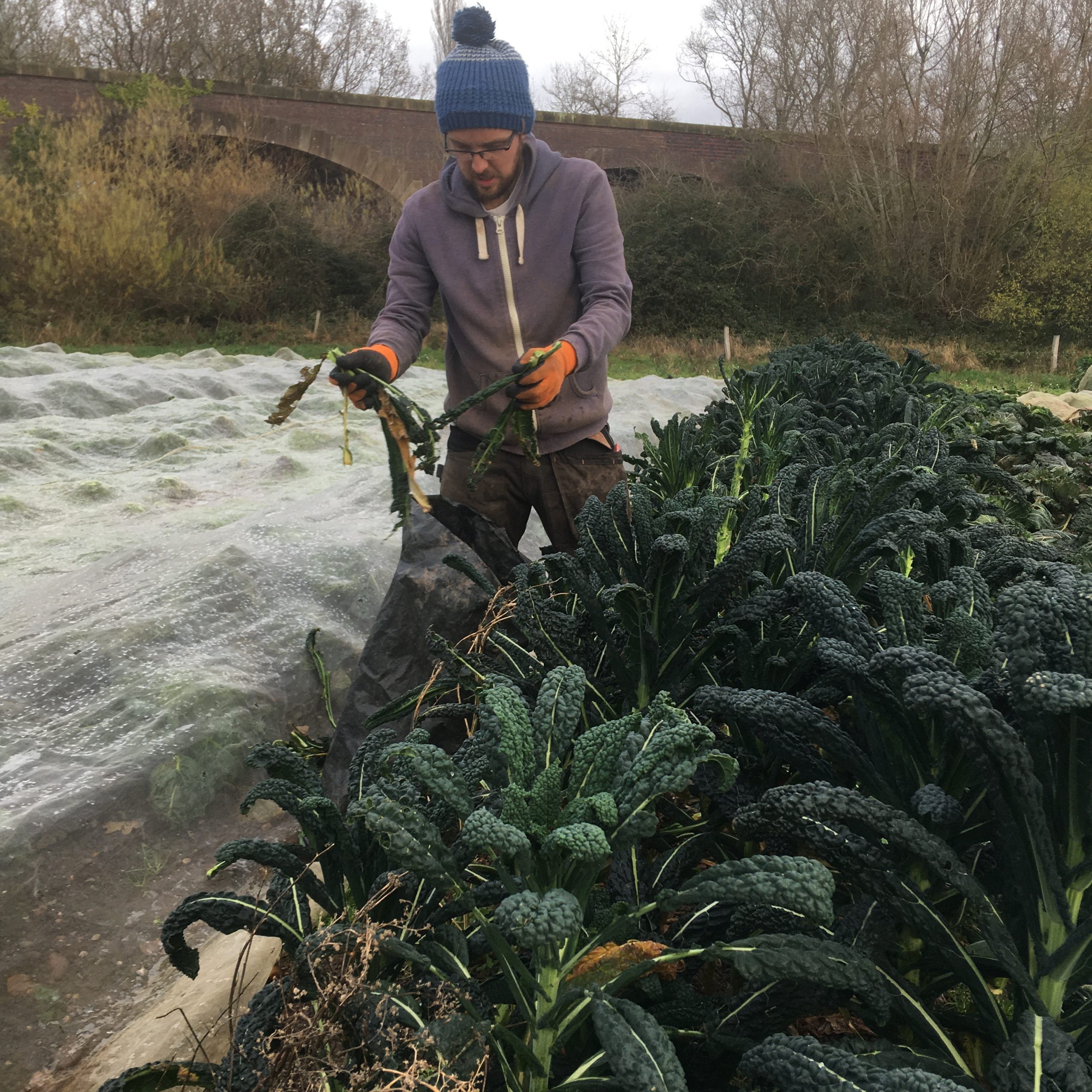
We are closely monitoring all of this and will decide on a course of action if needed. It may be that our annual harvesting gap in May and early June is more pronounced than usual. Some things we don’t yet know and it depends on how well the plants recover – it is always surprising how much renewal is possible. The kale in the fields bounced back well from the heavy frosts in December and there are also over wintering greens coming on nicely in the tunnels and the remaining parsnips are coming off the field looking good.
We don’t want to worry members, but give an honest picture of where we’re at and why the veg is as it is. Some of the crops, like the potatoes haven’t been too good because of summer drought conditions, and it’s quite heartbreaking to know that other plants we tended through that drought then succumbed to frosts. It’s not just Canalside but also many other farms that have been affected. This is where our CSA model hopefully comes into its own – sharing the risks and the rewards together. We’re doing our very best to get you as much good veg as we possibly can!
Farmers managing weather is a story as old as time, and, some of these are new challenges facing us. There are lessons to be learnt and strategies to be put in place e.g. better irrigation for droughts, different storage or protection measures for ongoing heavy frosts.
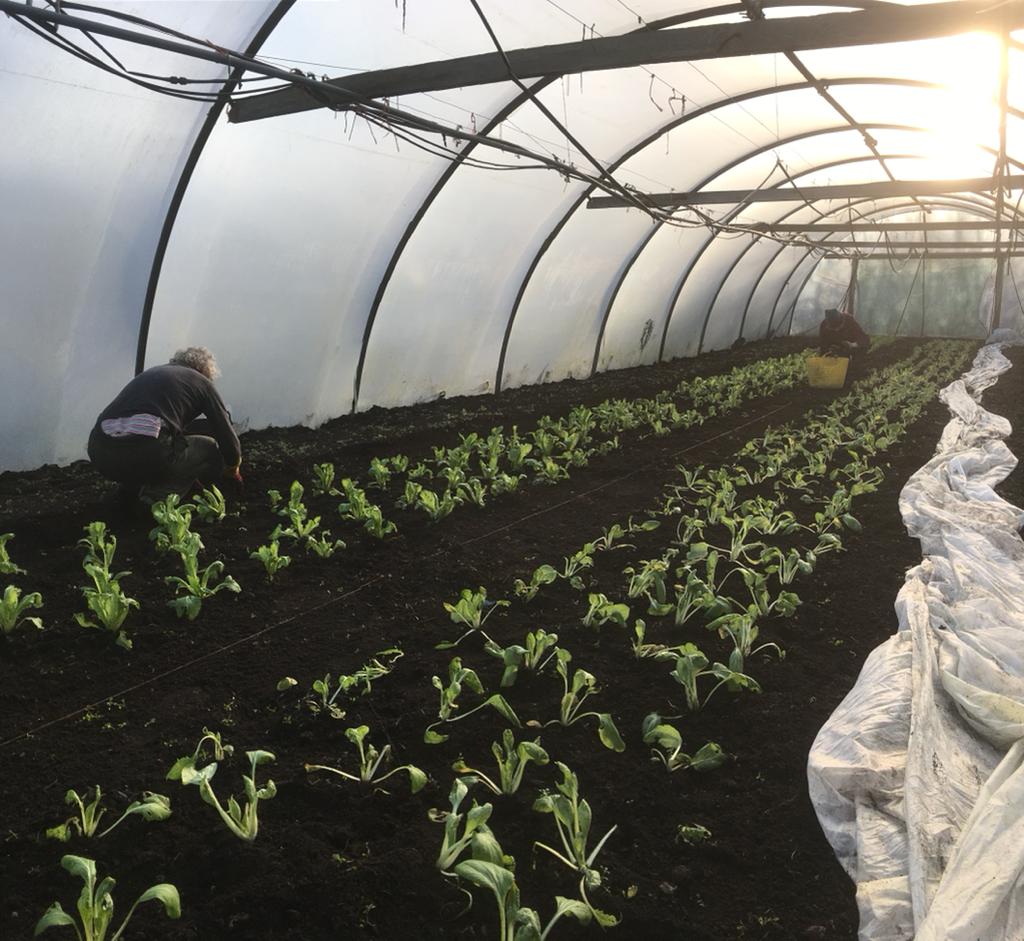
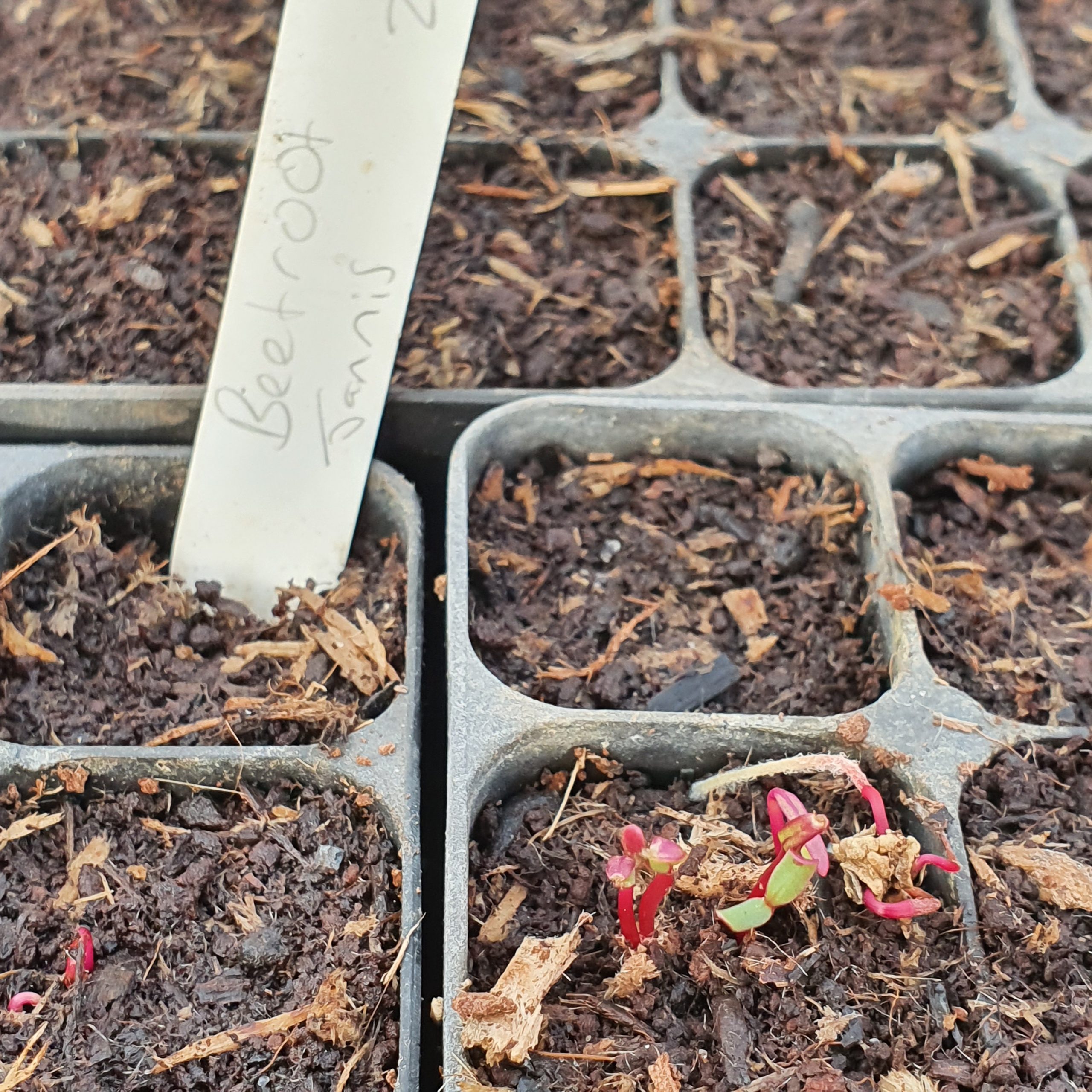

We’re currently working hard to get the new growing season underway without a hitch so we can plant new crops from late January onwards, according to our crop plans. We’re re-skinning our damaged polytunnel, building new hotbeds ready for propagation and fixing fences. Our volunteers have been working hard and we are determined to meet the challenges. Here’s praying for a more stabilised season ahead!
In hope,
Eleanor, Stephen and Lena
The growing team.